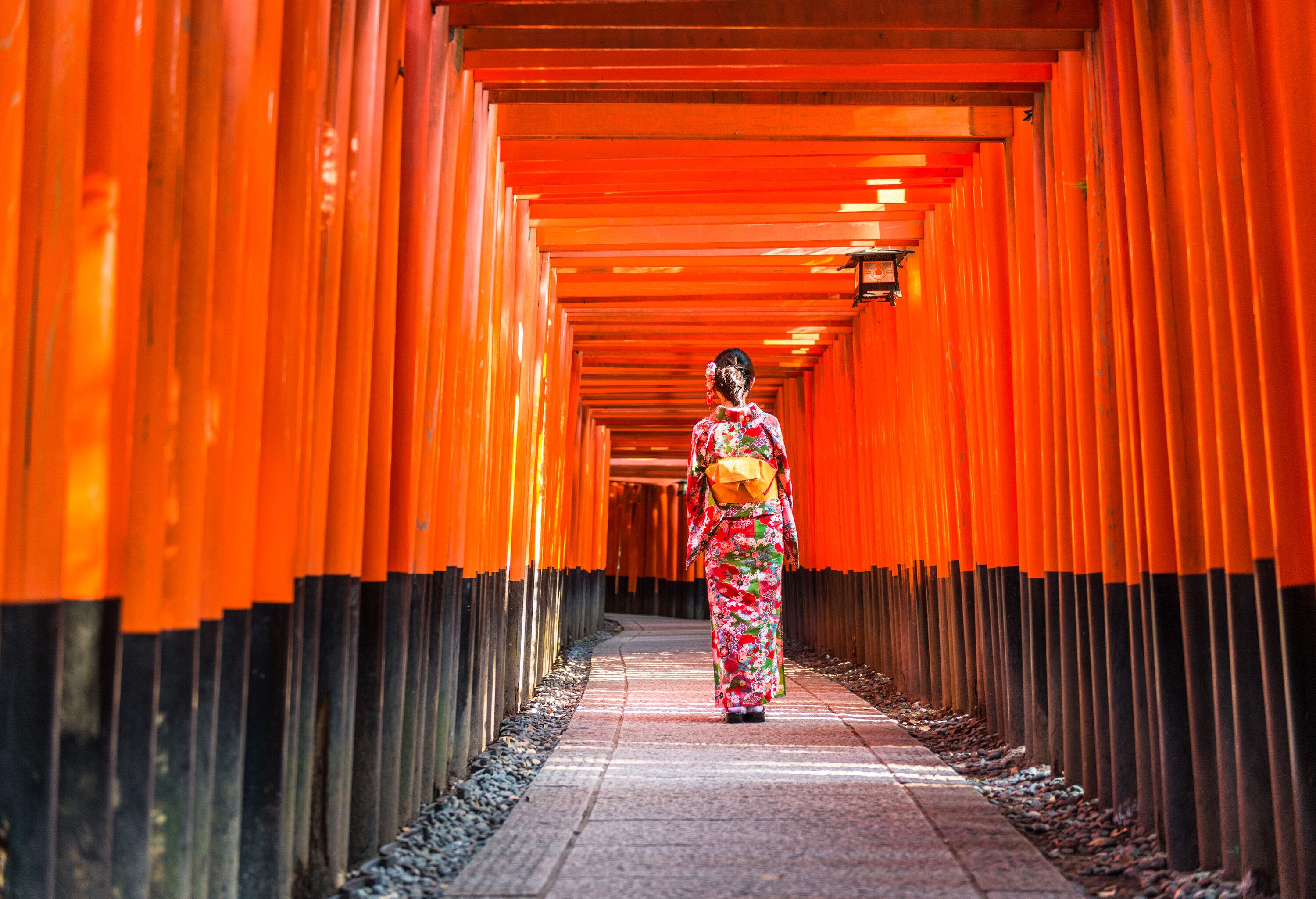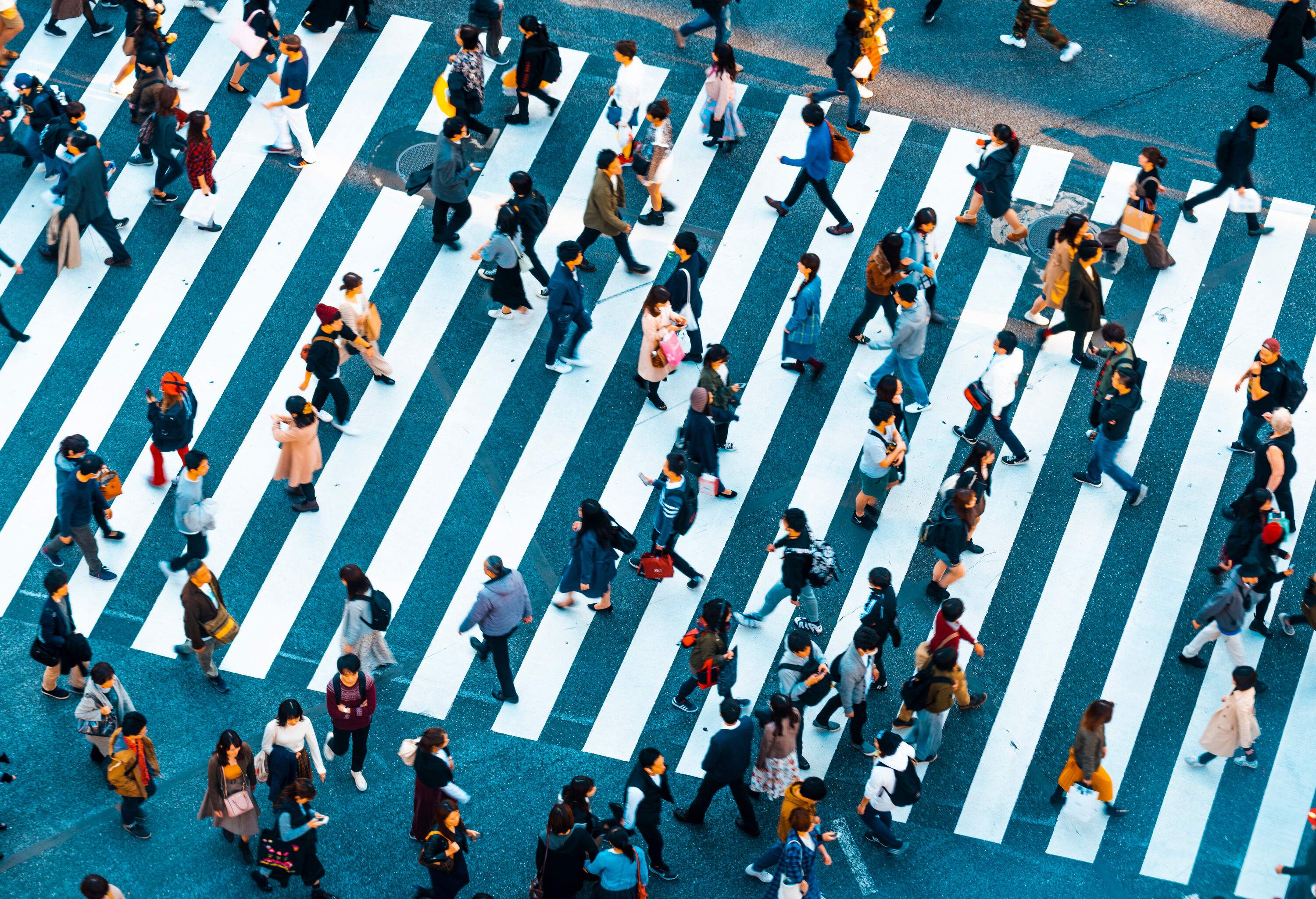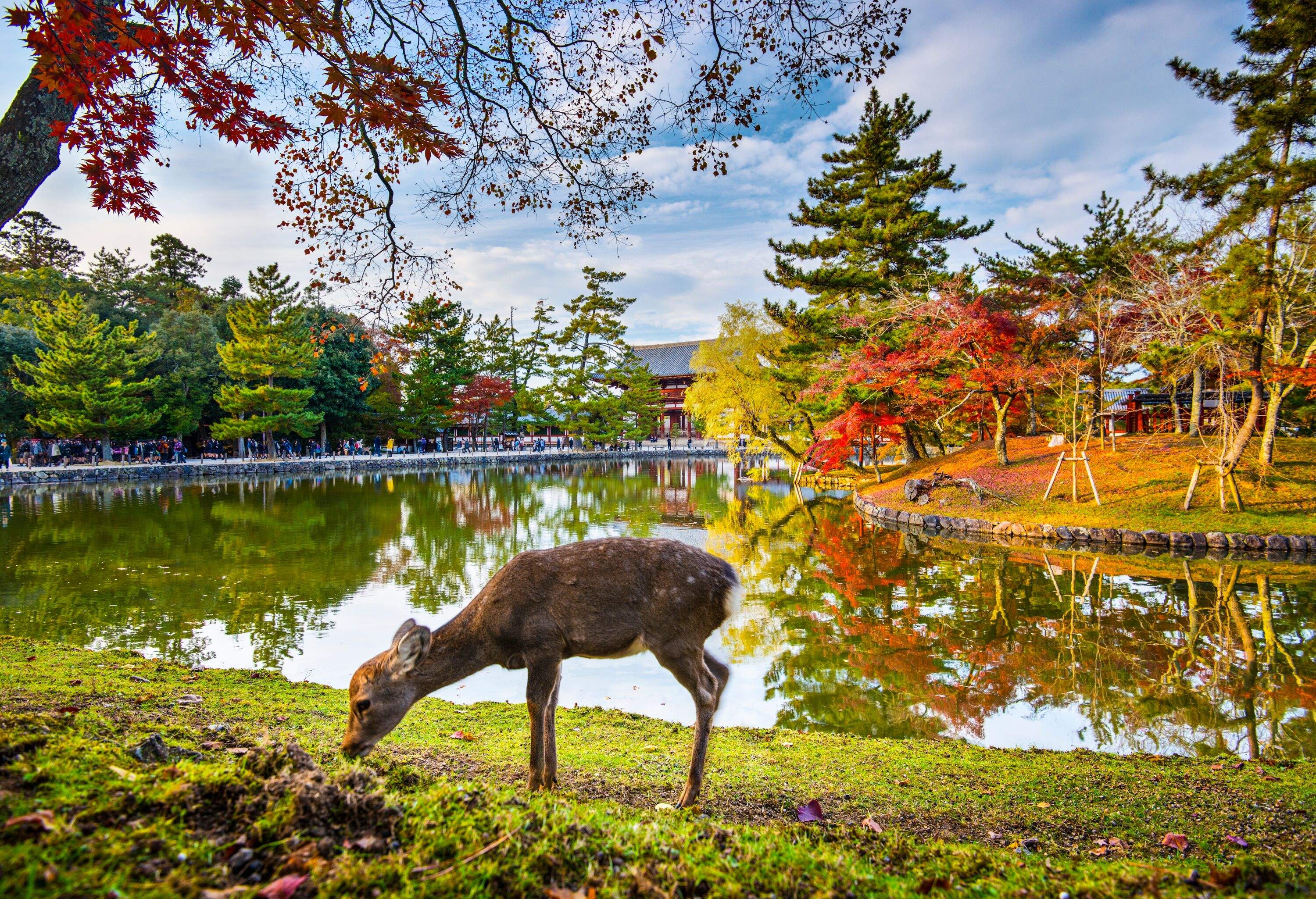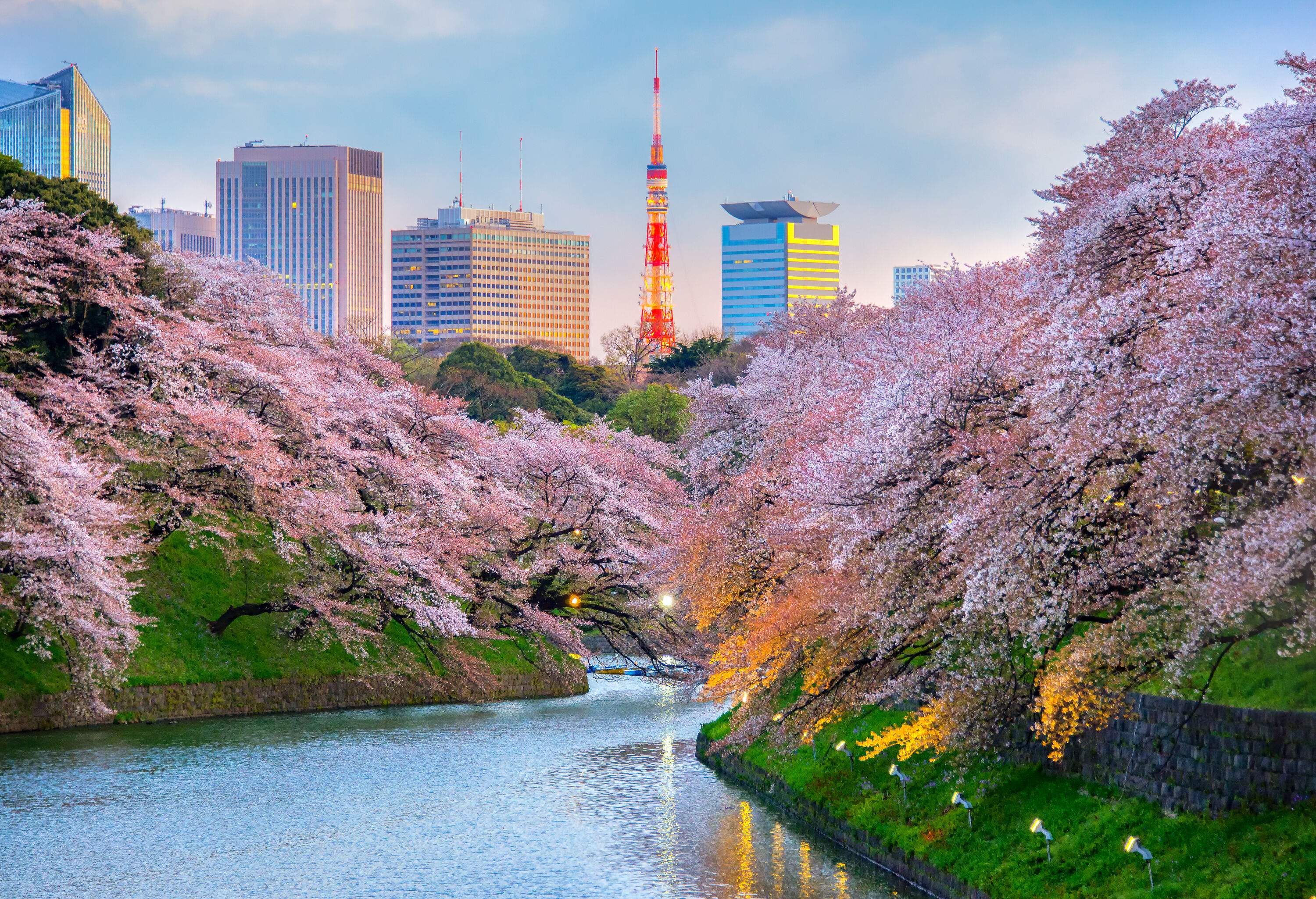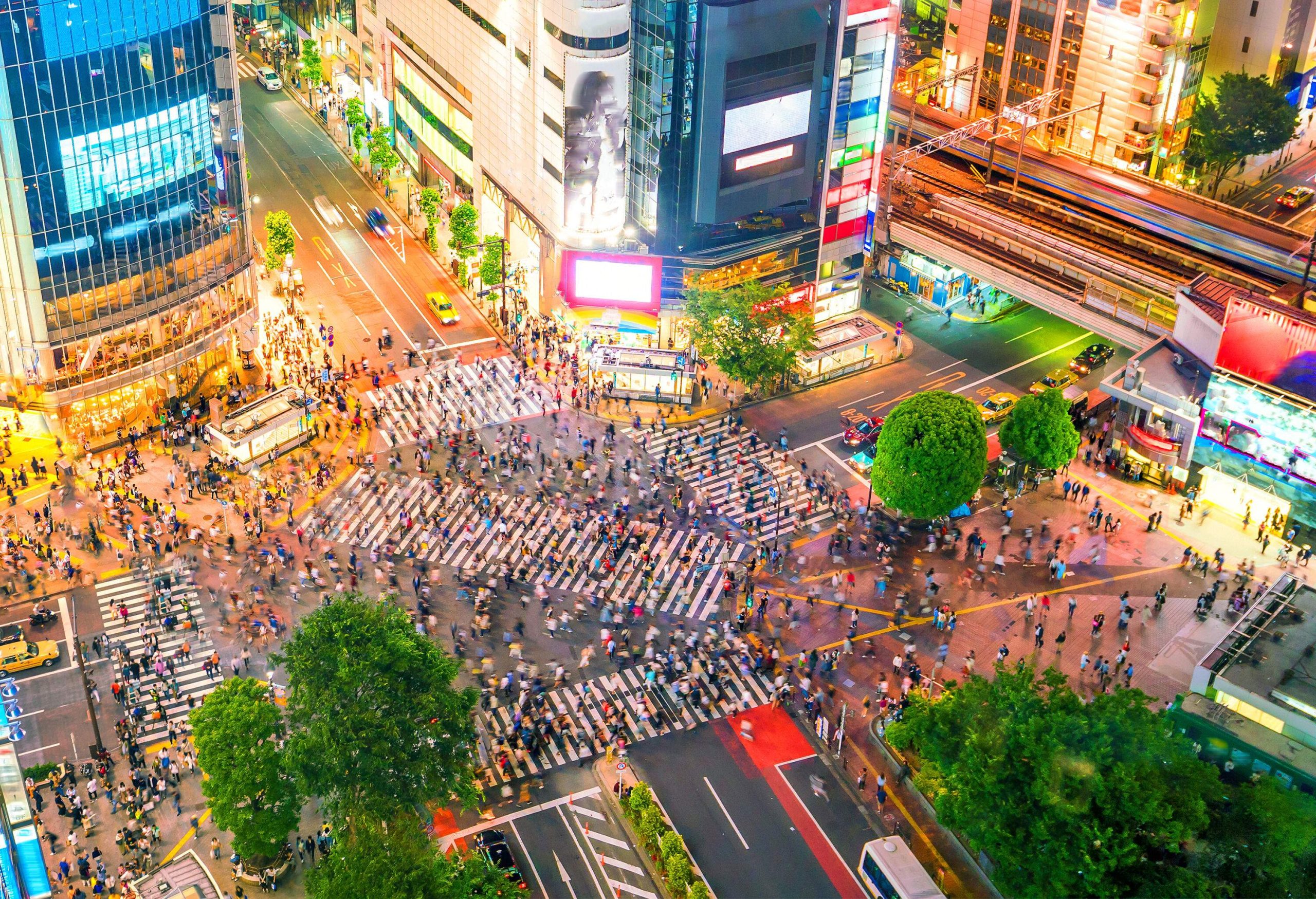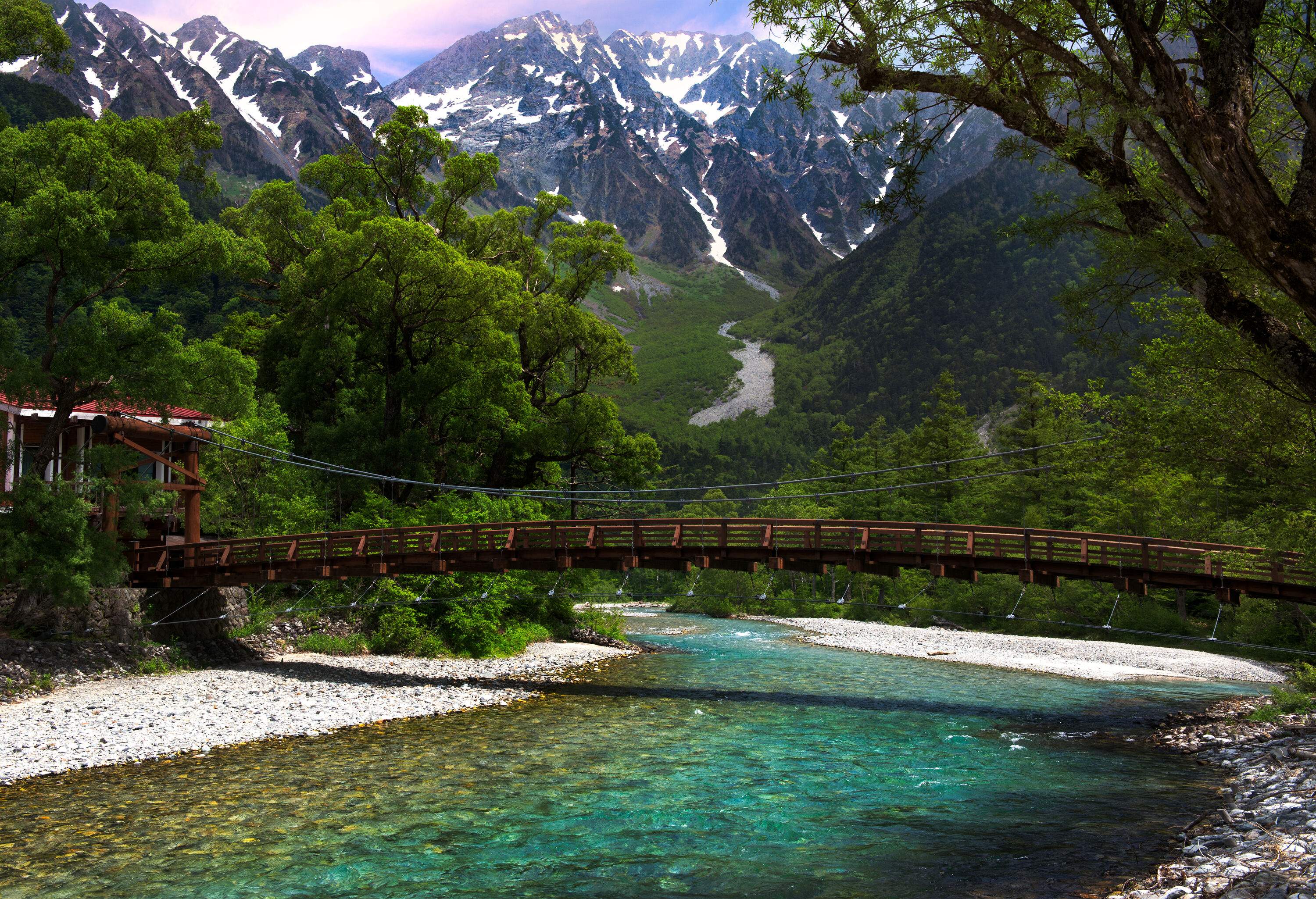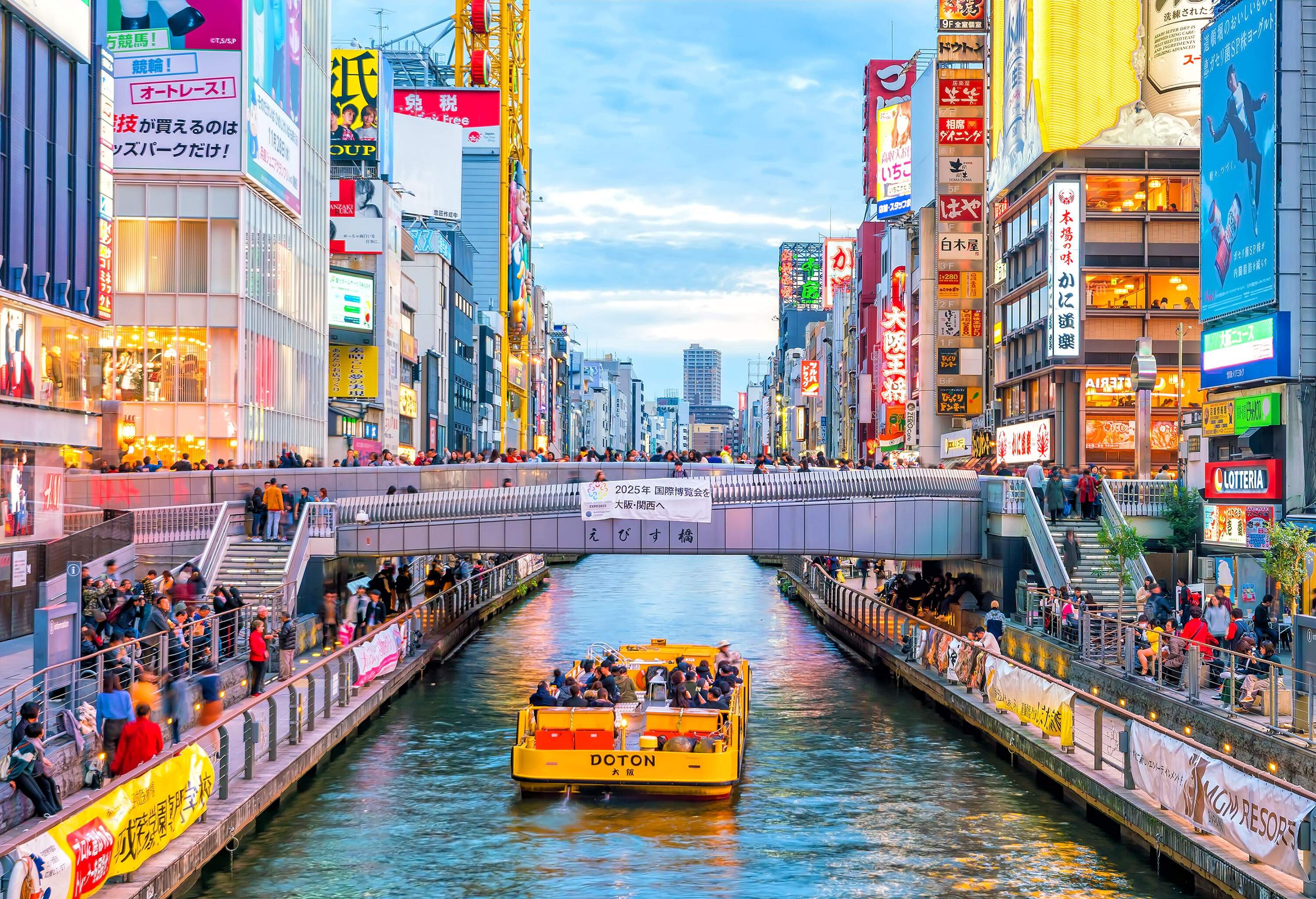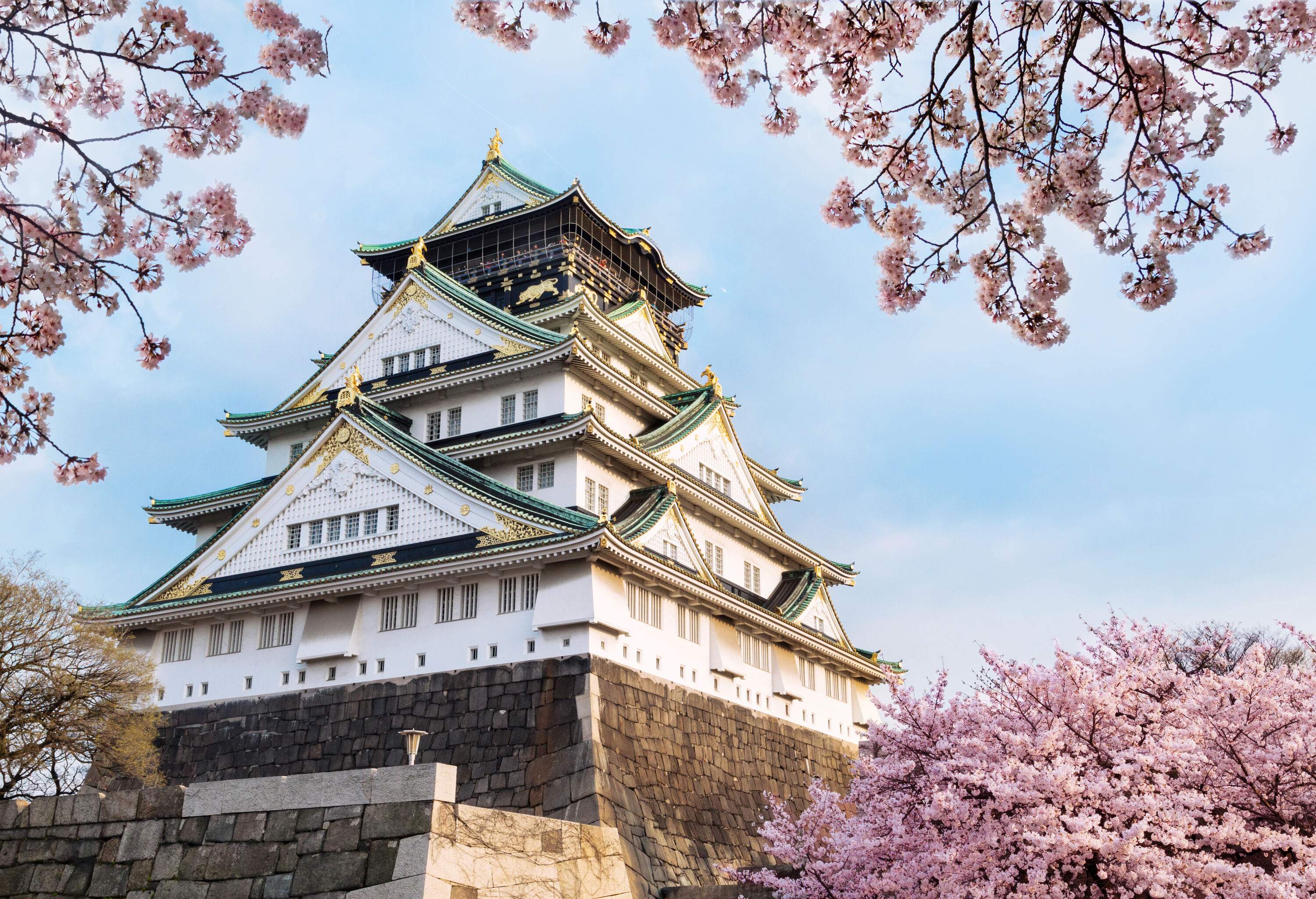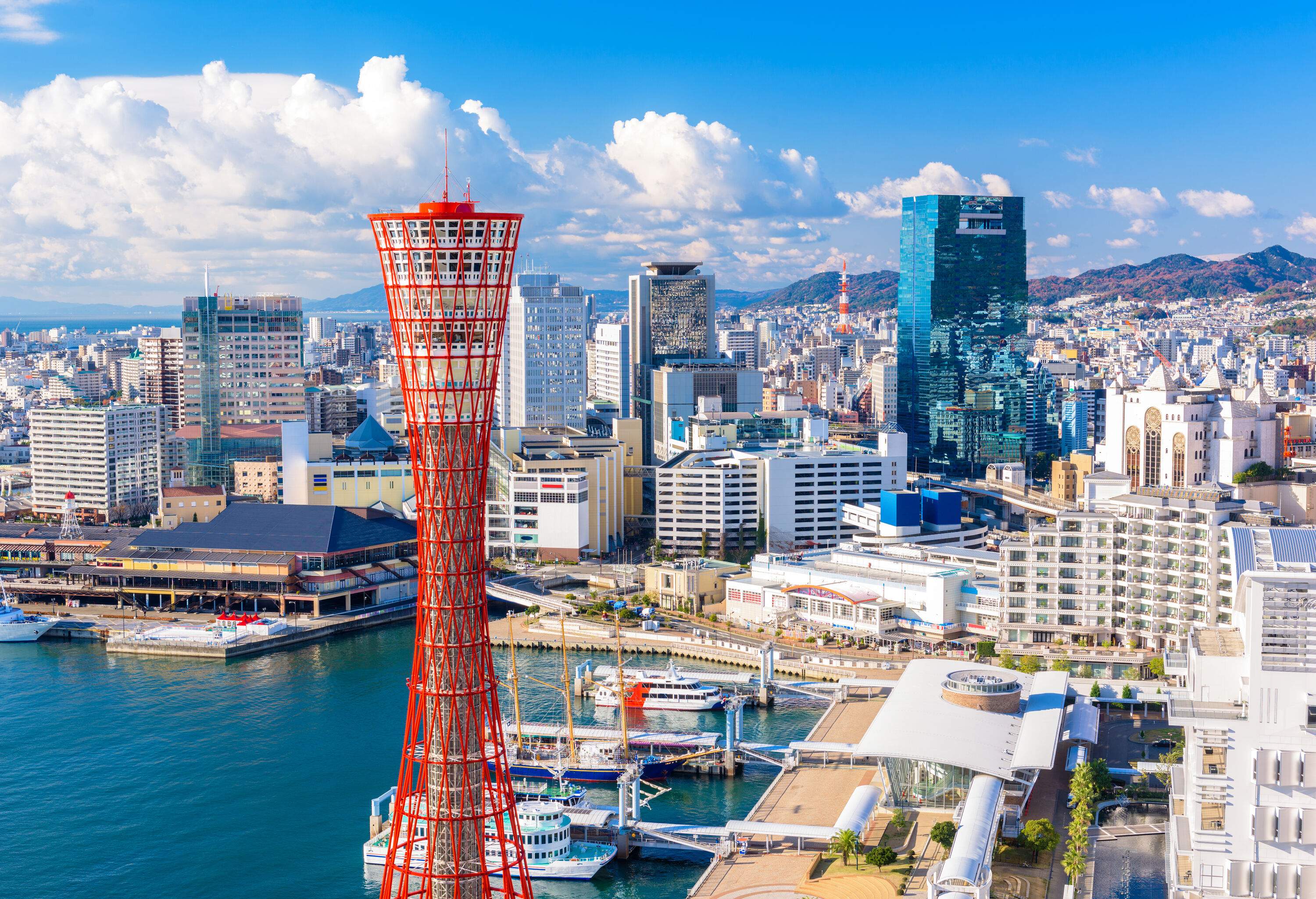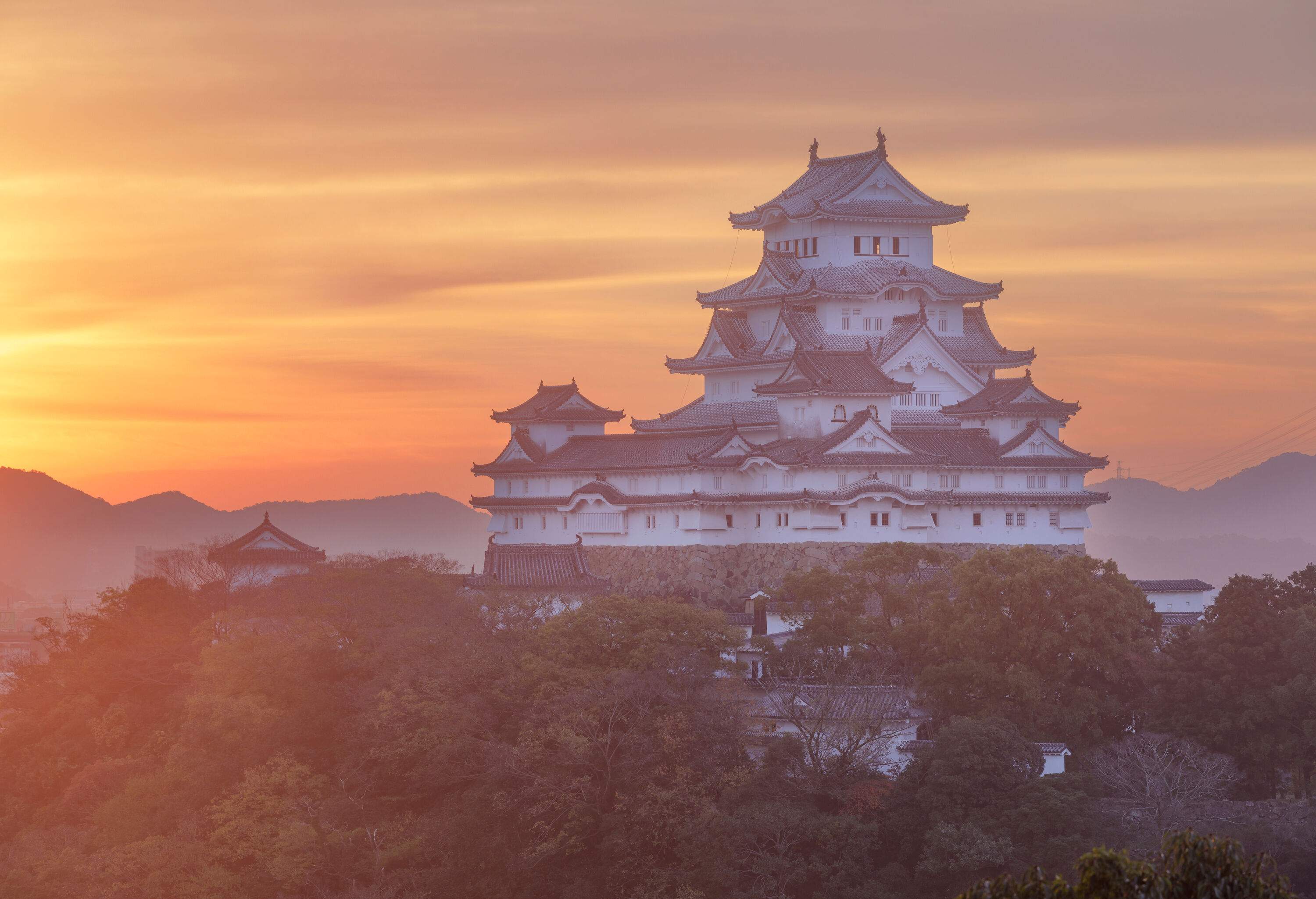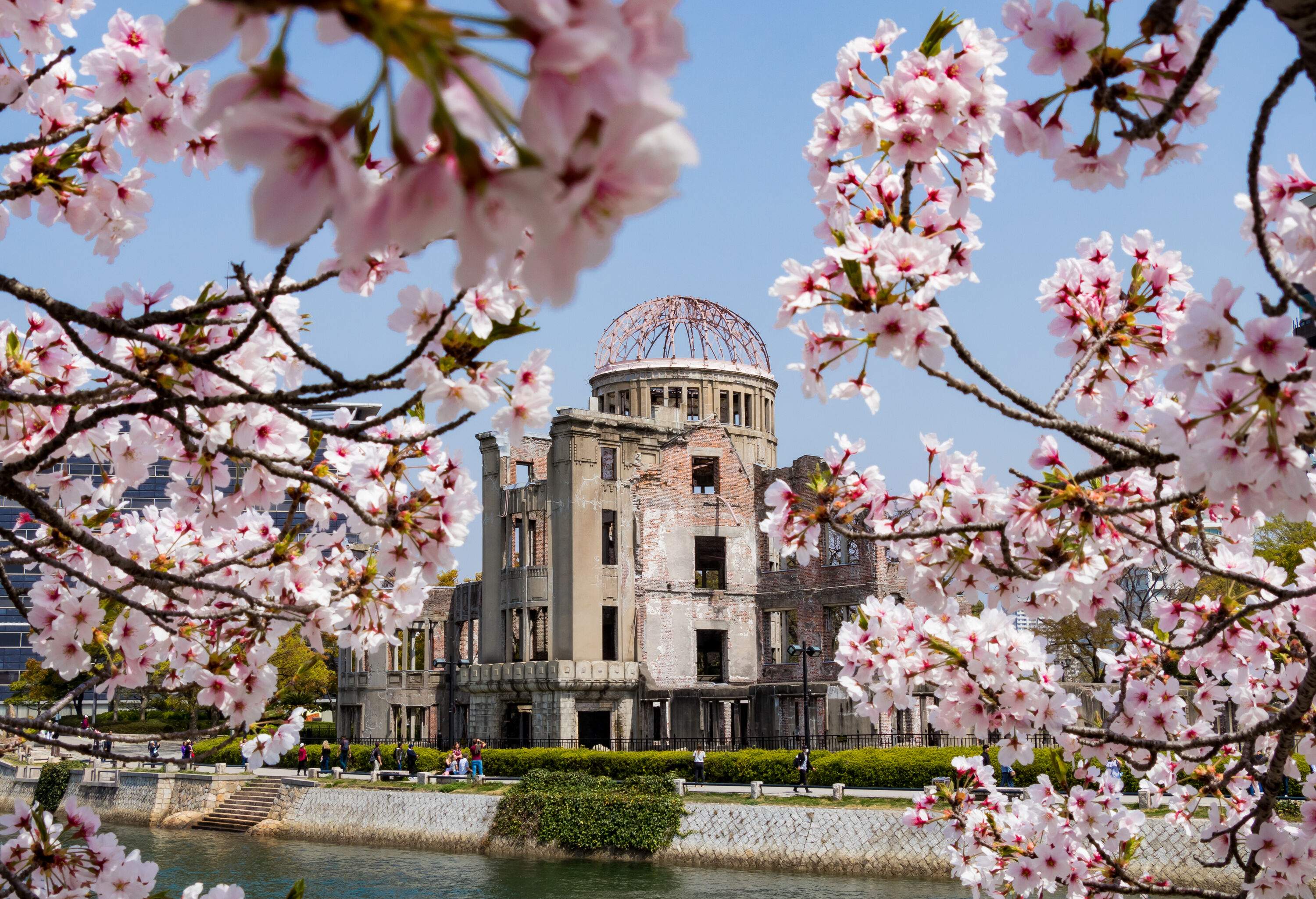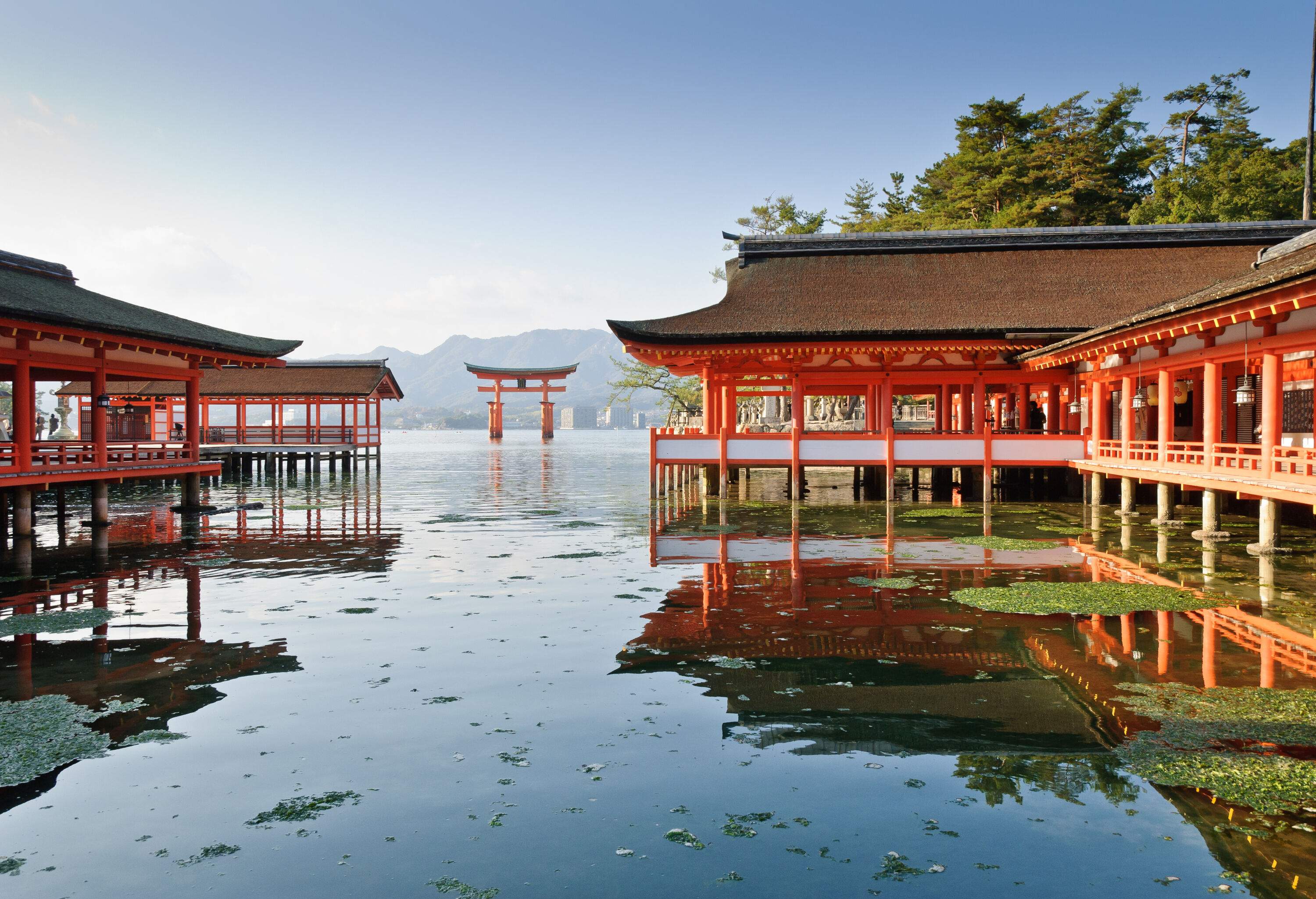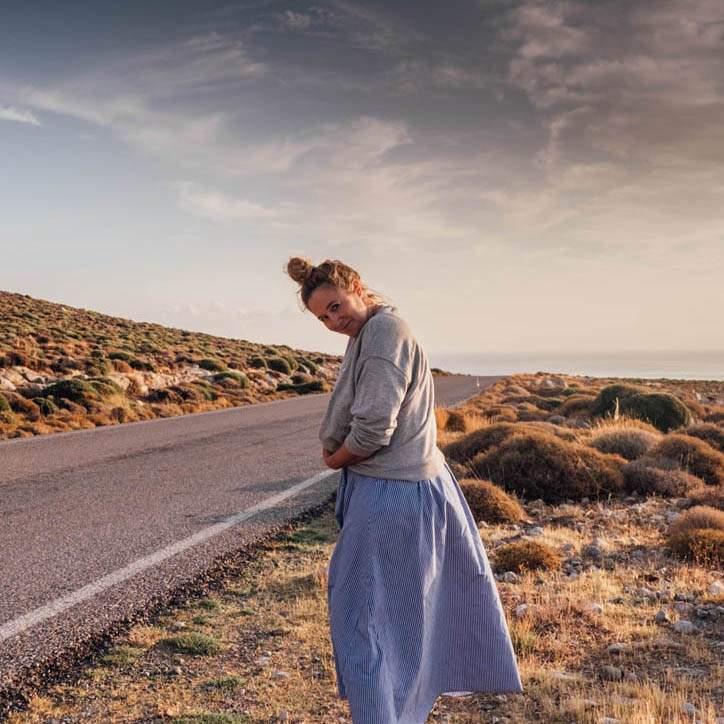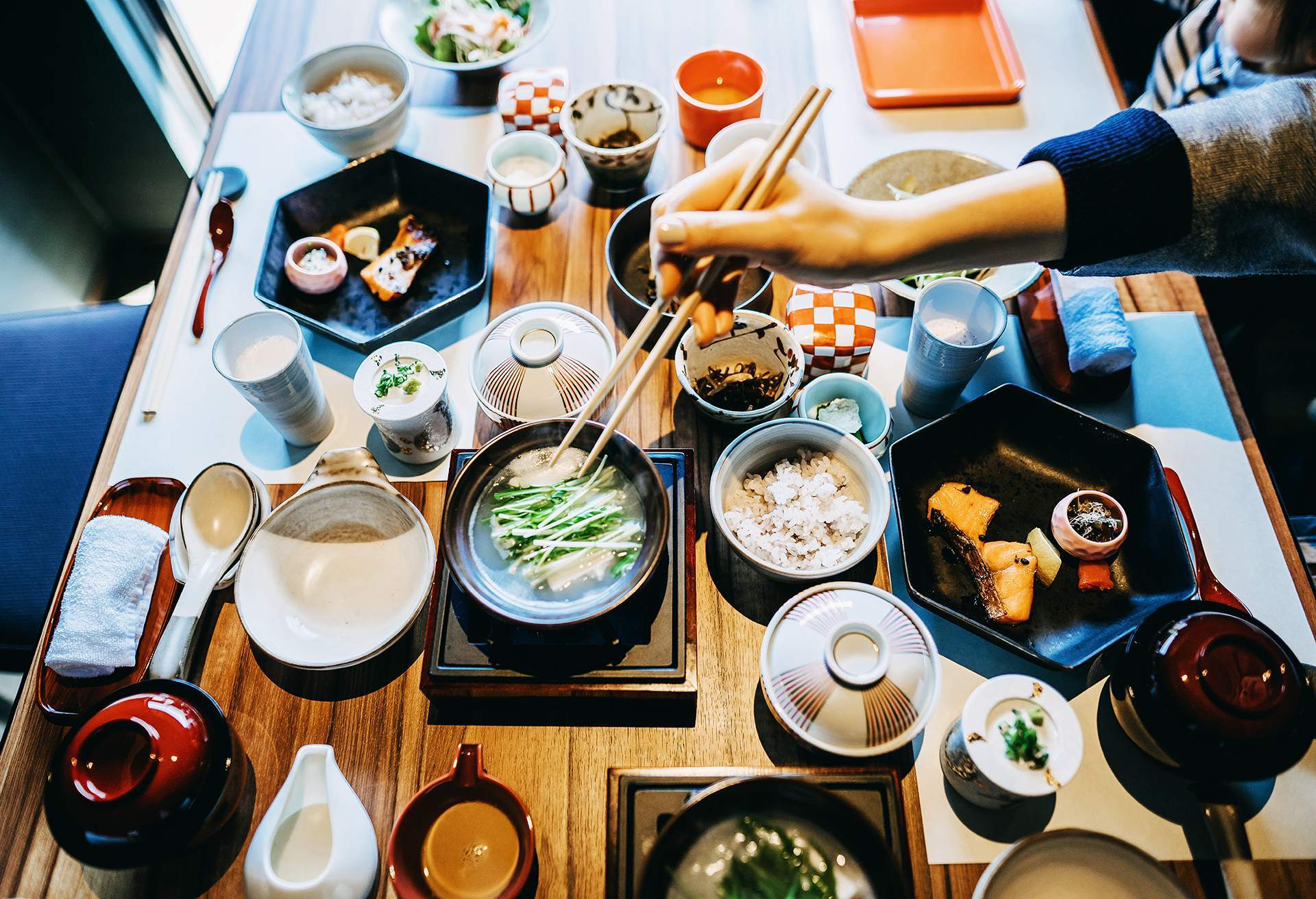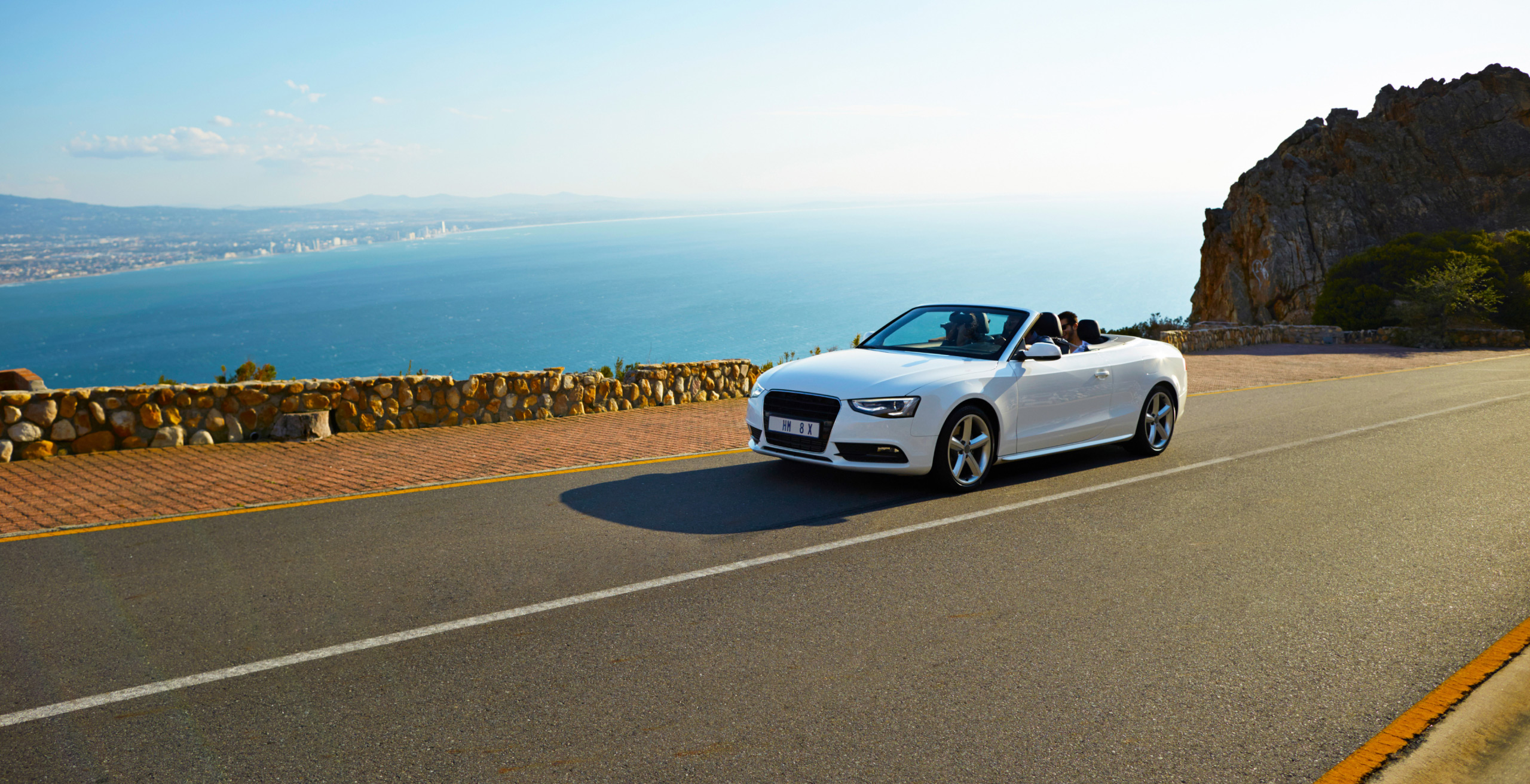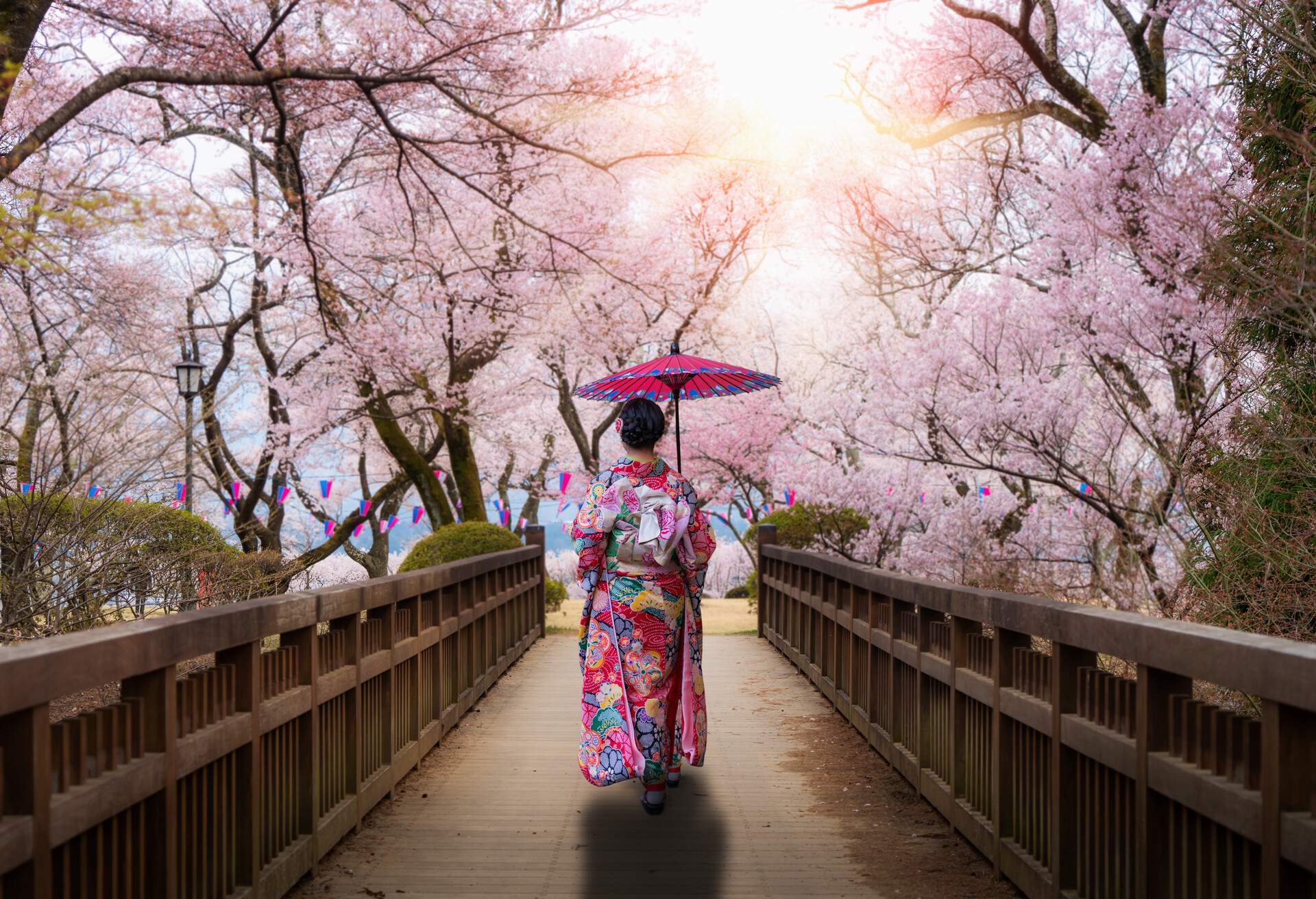Japan is one of the most fascinating countries you could visit but travelers are often overwhelmed to put together a Japan itinerary. Lucky for you I just returned from an epic trip and will share my best tips with you.
Whether you have a week, 10 days or want to combine both into a 2 week Japan itinerary - this article has you covered. I share some amazing places to see, where to stay, and how to plan a road trip in Japan.
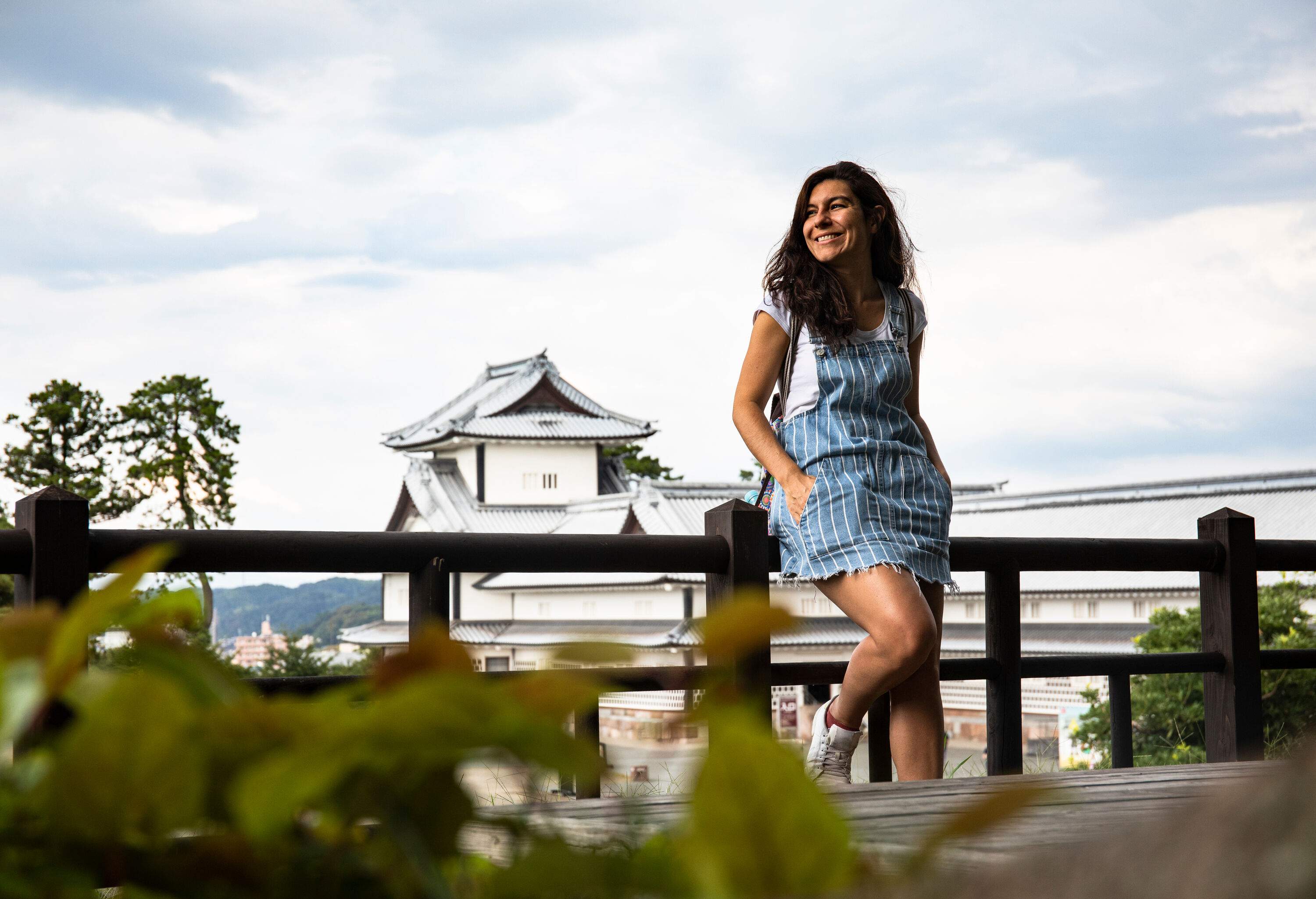
How to get to Japan?
Japan has a few international airports and some you can even reach with a direct flight from the US. A direct flight from NYC to Tokyo cost $1,546 on average and from LAX to Tokyo $1,019 (Data sourced through KAYAK comparator search tool).
When flying in or out of Tokyo you have the choice between airports Haneda and Narita. Depending on your Japan itinerary you may want to check for a direct flight to Osaka Kansai.
What is the best mode of transport for your Japan itinerary?
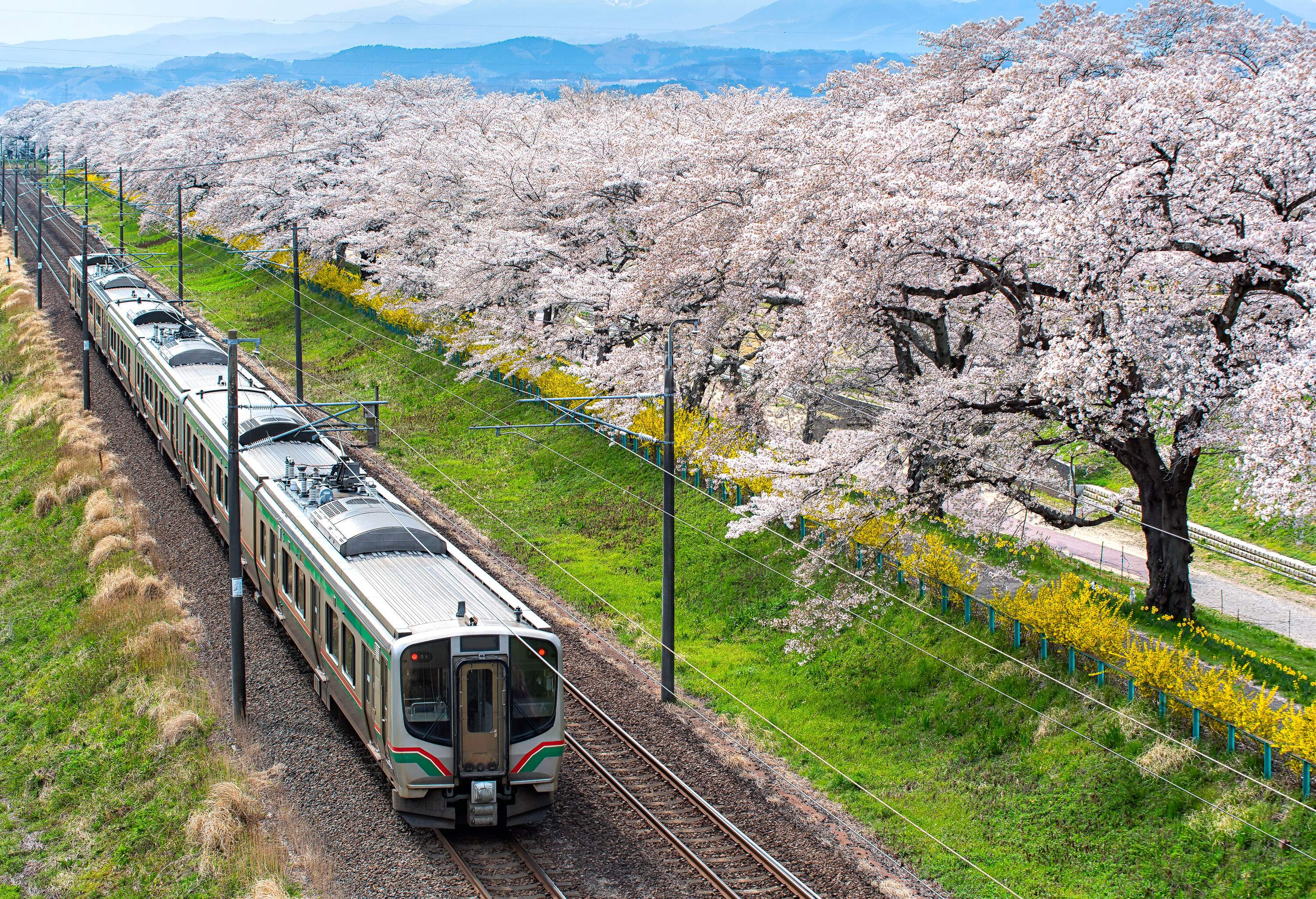
Most Japan itineraries can be done by car, train, or plane. Or a combination thereof. Budget and where you want to go will be deciding factors. In addition it is important to think about how many people will be traveling. Especially if you are planning a Japan itinerary for 14 days with the whole family, it might be cheaper to rent a car.
However you will need to get an International Driving Permit to legally drive in Japan. Also, there is left-hand traffic and the metric system to consider. Distances are shown in kilometers and speed in kilometers per hour (km/h). You can find more tips on driving in Japan as well as traffic laws on the website of the Japanese Automobile Federation.
Best time for your Japan itinerary
According to the data we have compiled (based on travelers's searches on KAYAK), October is the most popular season for a trip to Japan. March and April are also strong contenders due to it being Sakura, cherry blossom season. While the weather is great for exploring during these months, hotel rooms will be more expensive and popular tourist spots are even more crowded than usual.
January, February and August are the least popular travel months in Japan. If you don’t mind heat and humidity, give August a go. For those traveling in winter, there are plenty of great ski resorts in Japan but you must be mindful of road conditions when getting a rental car.
Average budget for your Japan itinerary
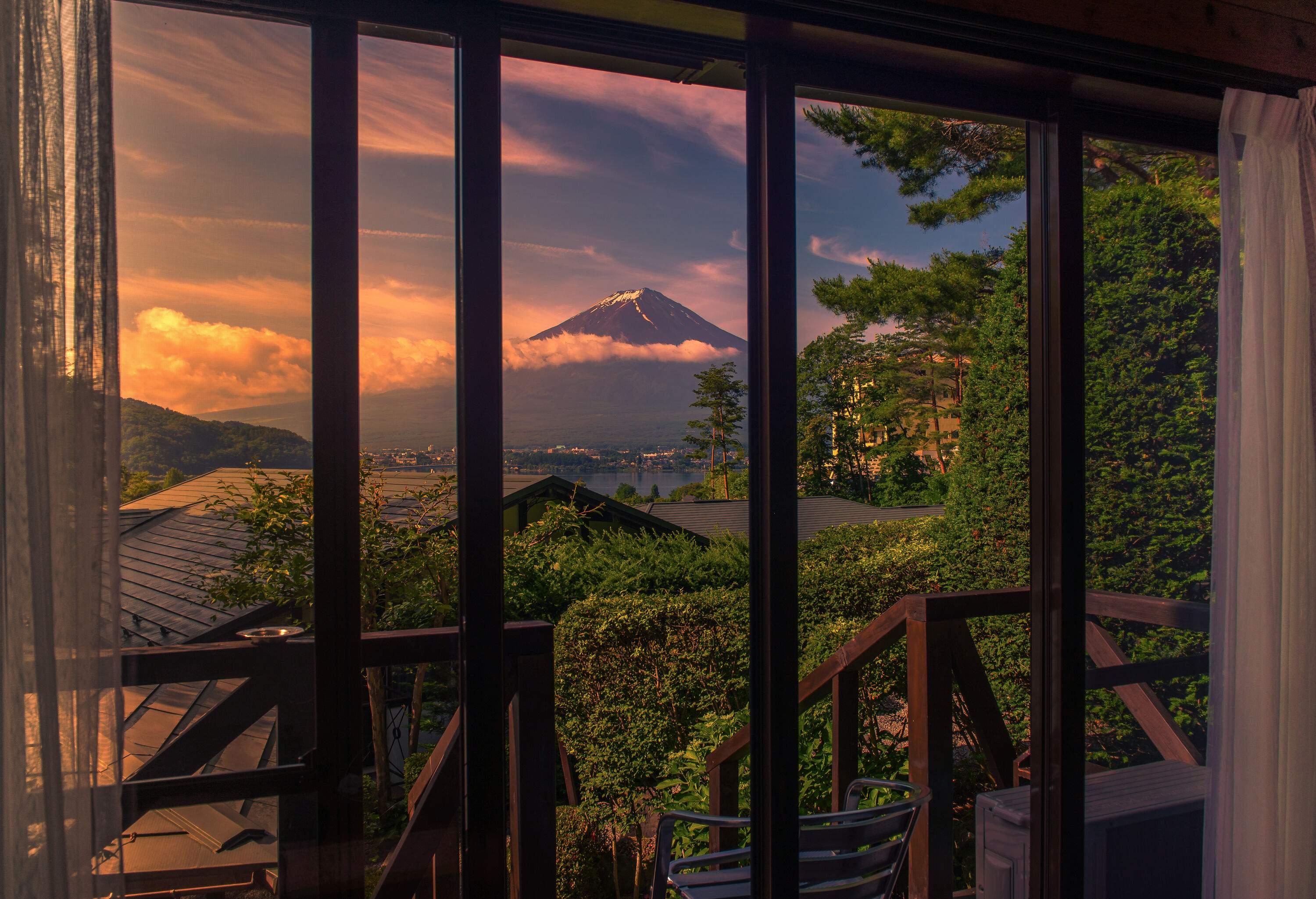
Before you book your flight to Japan, it is a good idea to put together your budget. If you are planning on renting a car for a road trip through Japan have a look at these average prices we have put together for you based on our data:
- Average price for a double room in Tokyo: $163 per night
- Average price of a bed in a hostel in Tokyo: $63 per night
- Average price of a rental car in Tokyo: $82 per day
- Price for a gallon of gas in Tokyo: $4.33*
*As of March 2024
For the 10-day Japan itinerary below, you will cover up to 300 miles and the total budget will be approximately $1100 per person based on two people sharing (not including flights). However, you may need to add a buffer for tolls which can be quite steep.
If you prefer to travel by train, the Japan Railpass is a great option to get around. However, it saw a recent price increase. Once you have mapped out your route it is a good idea to add up the individual trips on the Japan Railpass website and calculate whether it might be cheaper to buy single tickets.
The following Japan itineraries are planned around doing a road trip, and show distances and approximate travel times for cars.
Japan itinerary 7 days - From Tokyo to the mountains
Day 1-3: Tokyo
For most, a Japan travel itinerary starts in the country’s capital Tokyo. Chances are that jet lag means taking things a little slower but even without that, Tokyo is huge and there is so much to see. Take a few days to explore famous areas like Shibuya and Shinjuku, Ginza, and the historic Asakusa area.
Hotel in Tokyo: Hotel CEN, located a quirky yet residential area
teamLab
teamLab is an international art collective that currently has two exhibitions in Tokyo. It merges technology, art and nature and integrates the visitors in a very unique way. While a bit hard to describe, their current shows are absolutely magical even if you are not usually a museum fan.
Gōtokuji Temple
Cat lovers have to take a trip to Gōtokuji Temple. It is said to be the home of the maneki-neko, the beckoning cat figurines that are known to bring luck. You can see them everywhere around the temple and of course there is a gift shop. The cats from the source have become so popular that sales are limited to one figurine per person.
Day 4: Hakone
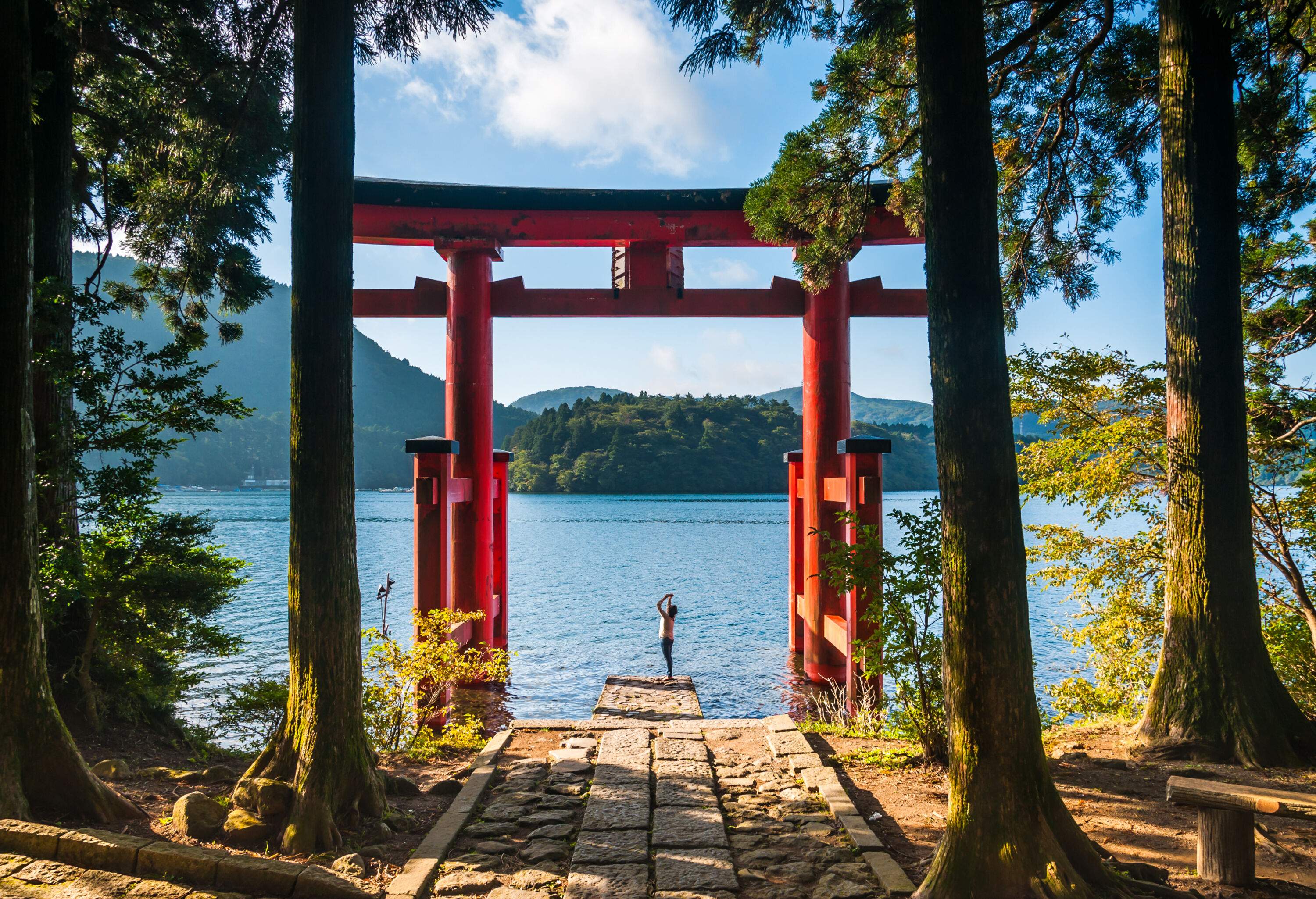
Distance from Tokyo: 50 mi - at least 1 hour
Not far from Tokyo, you find Hakone, a perfect place for a weekend getaway in nature. Over Lake Ashinoko you have a great view of Mount Fuji. After a day of exploring you can recharge in one of the town's many hot springs.
Hotel in Hakone: Fujiya Hotel, a beautiful historic accommodation
Owakudani
Hot springs, hot rivers, and egg-like smell: it is pretty obvious that Owakudani is an active volcanic zone! The area is located around the crater of Mount Hakone and there are various walking trails to explore. You can even buy eggs cooked in hot pools that are said to extend your life by seven years.
Lake Ashinoko
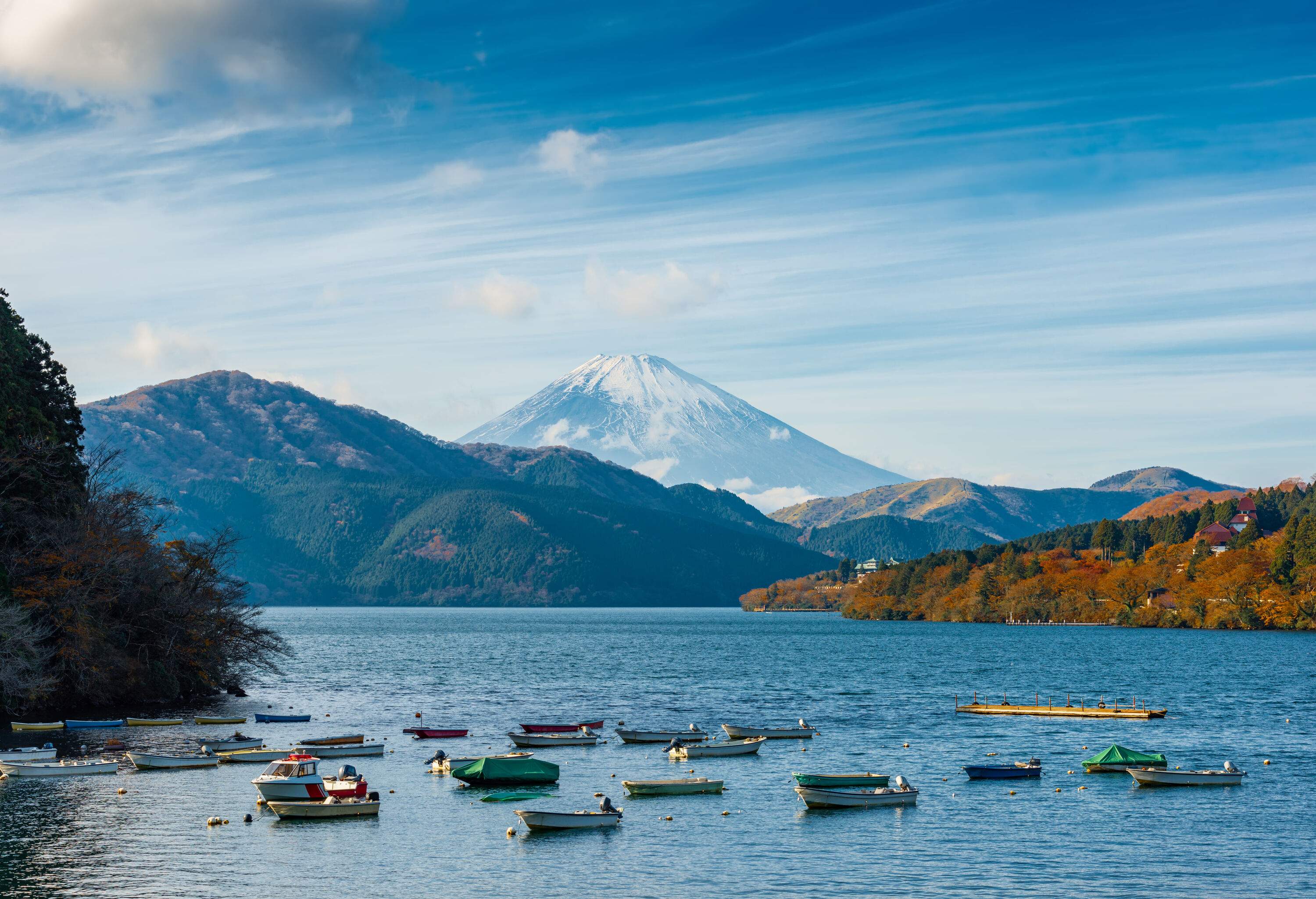
For some of the best Mount Fuji views head to the shore of Lake Ashinoko. You can take a sightseeing-boat over the lake or simply stroll along the shores. If seeing Mount Fuji in all its glory is a must, time your visit well: the cold season brings clearer skies.
Day 5: Matsumoto
Distance from Hakone: 150 mi - 3 hours
Mountain lovers have come to the right place as Matsumoto is a great spot to explore the Japanese Alps. There are plenty of trips you can take from here to see various parts of the Alps, summer and winter. The city is also home to a few interesting museums and one of Japan’s most beautiful castles.
Hotel in Matsumoto: Onyado Nono, a stunning inexpensive hotel with a hot spring
Matsumoto Castle
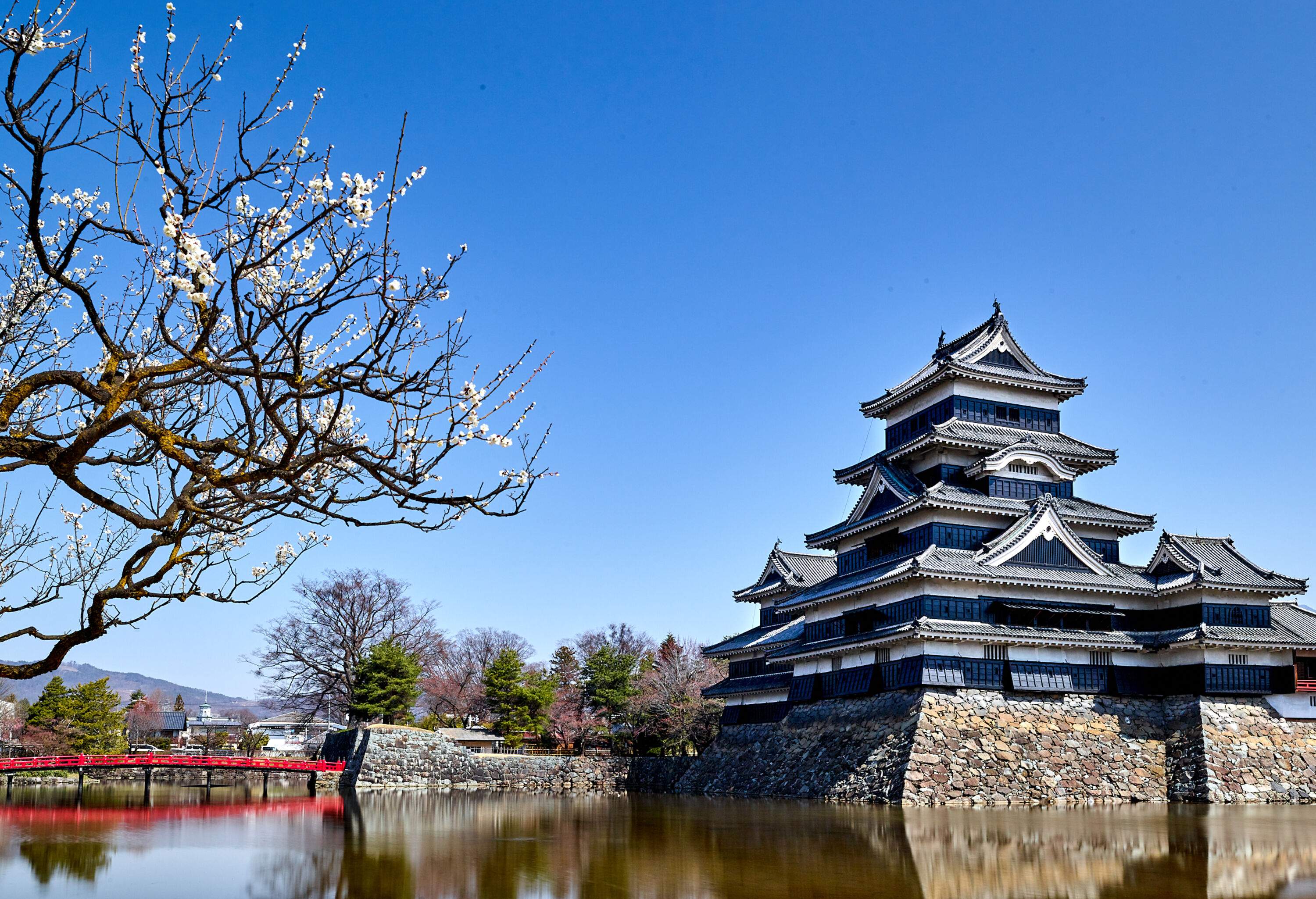
While some Japanese castles had to be rebuilt, Matsumoto is one of the most complete original castles. This is highlighted by the authentic wooden interior. Especially during cherry blossom season a stroll around the moat is a treat.
Daio Wasabi Farm
Some like it hot and if you do, the Daio Wasabi Farm is a place you should see. On the farm, you can visit a restaurant and many shops that sell anything from fresh wasabi root to wasabi beer and even wasabi chocolate.
Day 6+7: Shibu Onsen
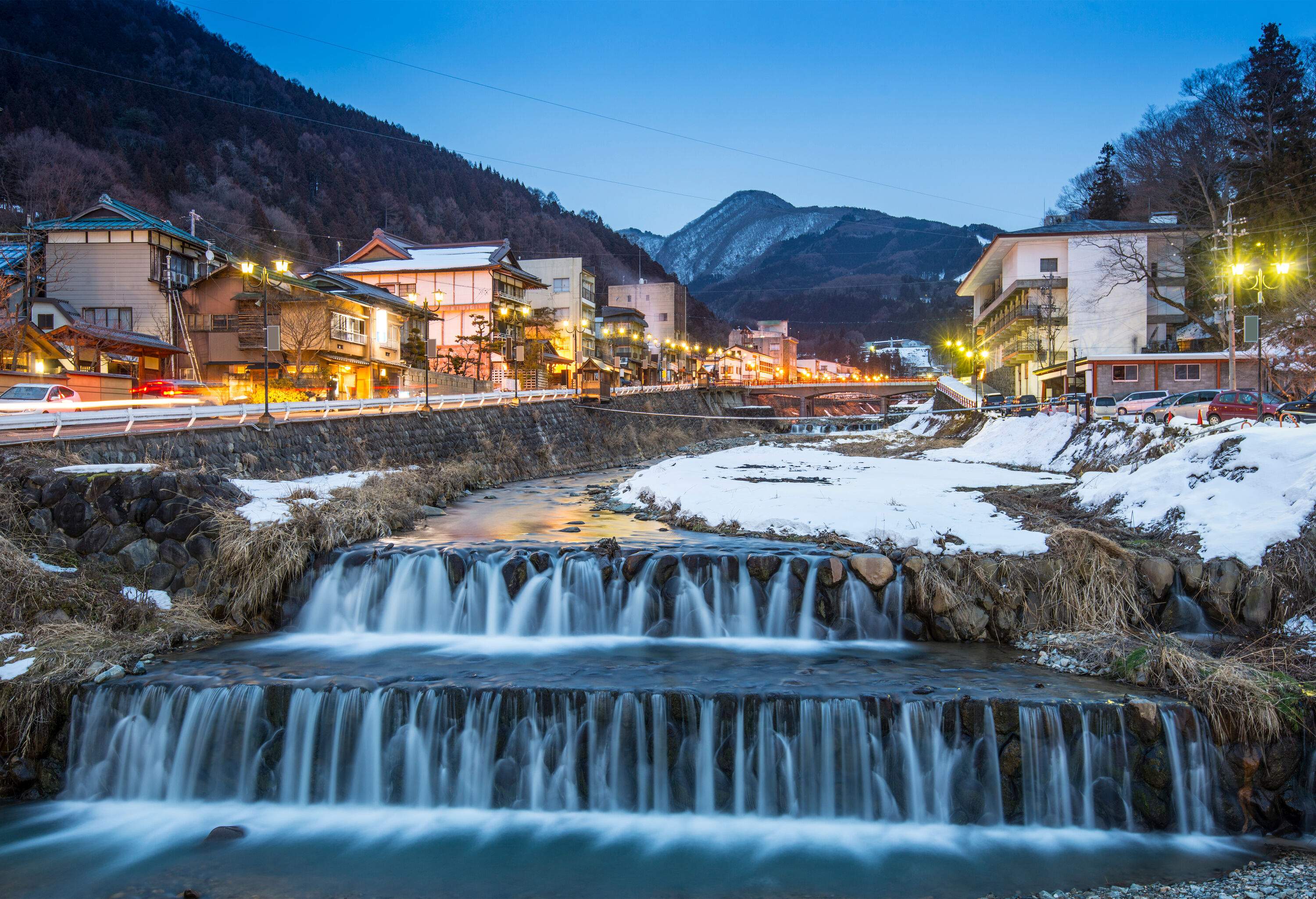
Distance from Matsumoto: 60 mi - 1.5 hours
Shibu Onsen is a picturesque historic hot spring town surrounded by mountains. Beautiful ryokans, the traditional Japanese inns, line the streets and are the perfect backdrop for a wellness holiday. Ryokan Kanaguya is said to have inspired the bathhouse of the beloved Studio Ghibli movie “Spirited Away”.
Hotel in Shibu Onsen: Kokuya, a stunning ryokan in the center of town
Visit nine public Onsen
There are nine public Onsen in town and you will need to stay overnight to get a key to visit. Visiting all nine brings good fortune! One thing to remember: tattoos are unfortunately a no-go in most Japanese Onsen. If you have some, check if your hotel has a private hot spring.
Jigokudani Monkey Park
It is best to come before March if you want to see the Japanese macaque or snow monkeys as they are called in Jigokudani. Only when it is cold do they come down to sit in a hot Onsen and chill, play and be adorable.
After your final night in Shibu Onsen you will drive back to Tokyo for your flight home. Make sure to check which airport you are flying out from (Narita or Haneda) and leave enough time to drop your rental car off, before checking in.
Japan itinerary 10 days - Kansai & beyond
Day 1-3: Osaka
Osaka, Japan’s second biggest city, is known for its incredible food scene. Next to the usual staples, the city’s kitchens are best known for their Okonomiyaki, a pizza pancake mix, and Takayaki, yummy octopus balls. Dotonburi, Osaka’s nightlife center, is one of the best places to try them both.
Hotel in Osaka: Zentis, a member of Design Hotels with light and airy rooms
Shinsekai
Another great area to explore is Shinsekai, meaning ‘new world’ when it was built in the early 20th century. The shopping and dining area centers around the Tsutenkaku Tower, modeled after the Eiffel Tower. Today a visit feels a bit like traveling back in time - but in a good way!
Osaka Castle
Osaka Castle was built in 1583 and became the largest castle at the time. Everything about it was meant to impress and impress it did. That was until its destruction first by Tokugawa troops and then by lightning. Today’s reconstruction was built in the 1930s but it is still a sight to behold. Osaka Castle is also one of the best hanami spots where you can see the cherry blossoms.
Day 4: Nara
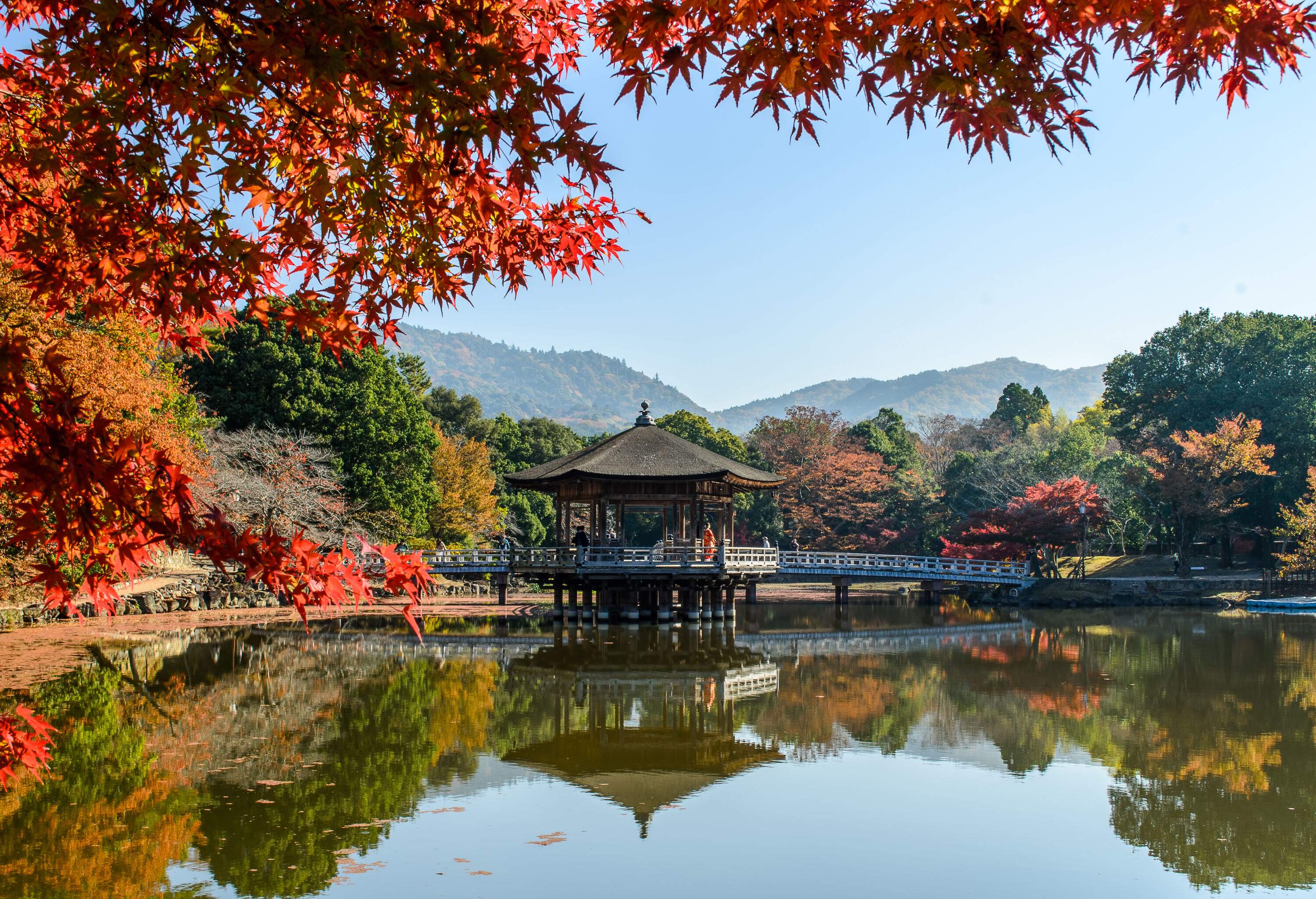
Distance from Osaka: 20 mi - 30 minutes
Nara was Japan’s first official capital and still holds a lot of significance thanks to its historic treasures. The Todaiji Temple is one of the most famous ones and is home to a large bronze Buddha. But admittedly most people come to meet the locals in Nara…
Hotel in Nara: Iroha Grand Hotel Kintetsu Nara Ekimae in the city center
Nara Park
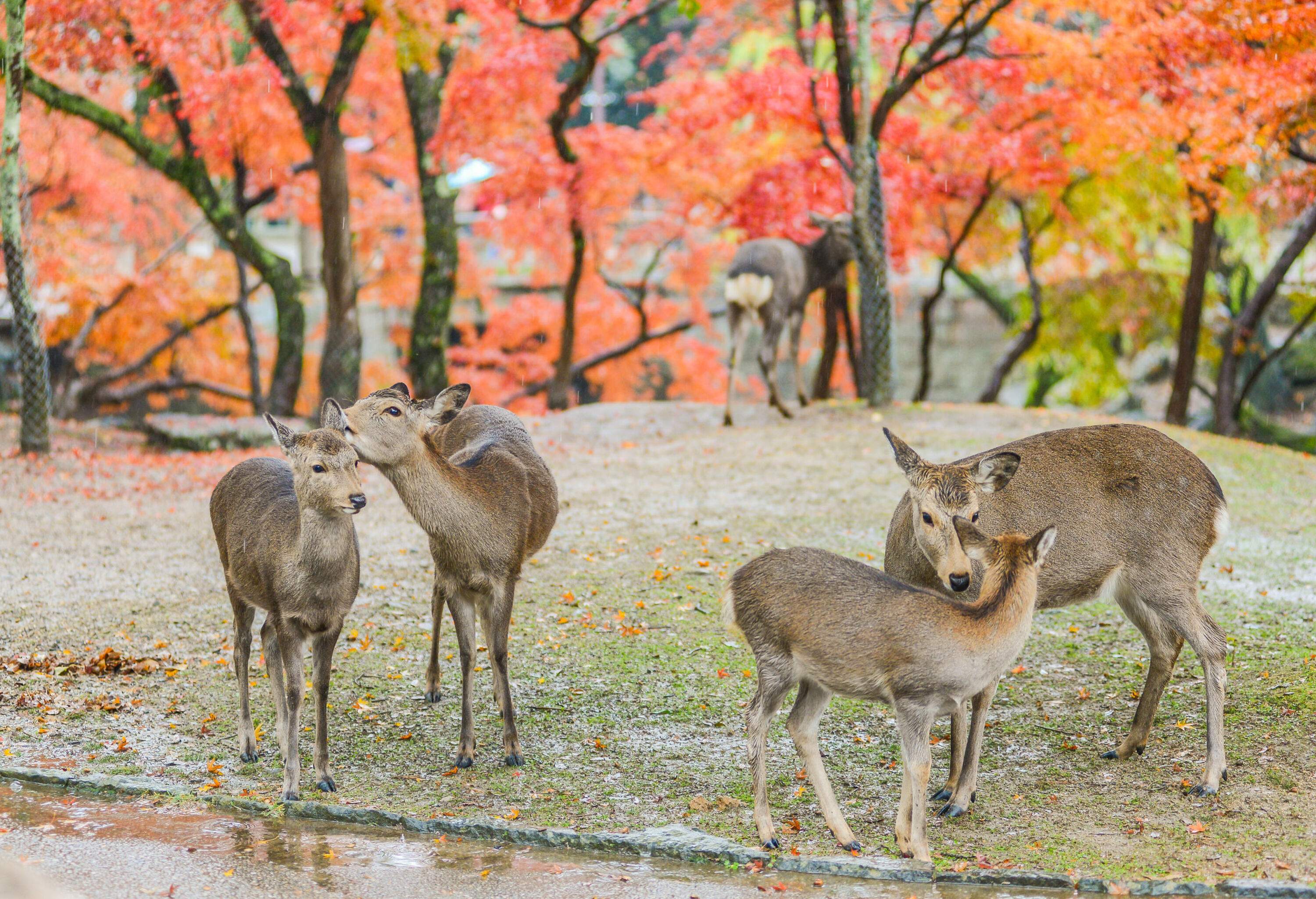
Nara is best known for its over 1000 wild deer that roam the park and sometimes the surrounding streets. You can buy some deer cookies and feed them but be careful - the deer can be quite cheeky and might search your bag or nibble on your coat. The further you go into the park, the fewer people and you will have the deer all to yourself.
Nakatanidou
If you are in the mood to nibble on something, head to Nakatanidou, a shop that makes the most delicious yomogi mochis. Even more exciting: you can watch mochitsuki. This is the process of mochi-pounding. Nakatanidou has been awarded for the fastest mochi pounders and every half an hour you can watch their craft.
Day 5-7: Kyoto
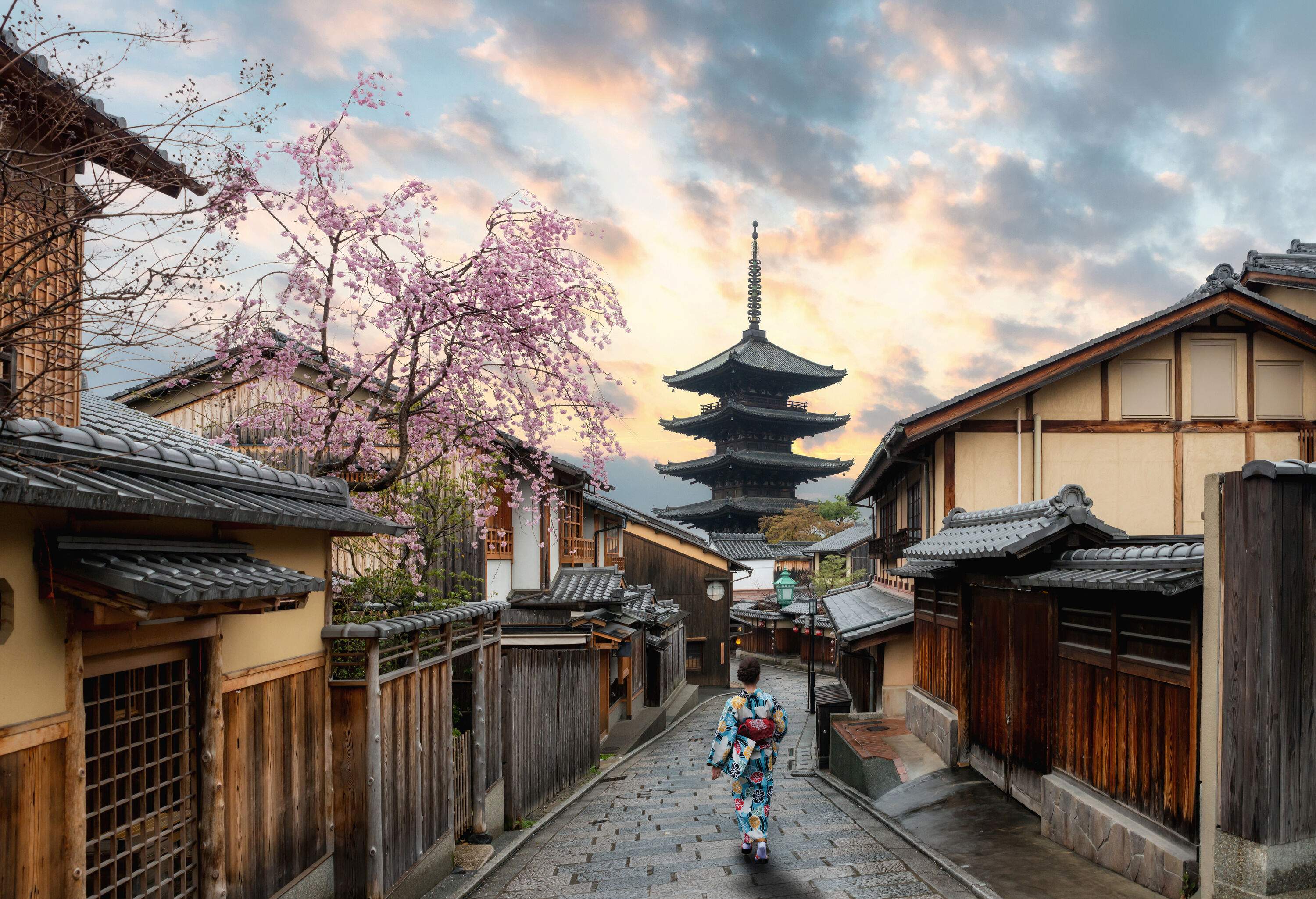
Distance from Nara: 30 mi - 45 minutes
Kyoto is another former capital of Japan and thanks to some beautiful historic buildings and lots of charm, it is an absolute must-see for visitors. Highlights include Nijo Castle, the Imperial Palace, and dinner in Pontocho, an alley with traditional wooden buildings.
Hotel in Kyoto: Node, a member of Design Hotels with lovely, modern rooms
Nishiki Market
A visit to the Nishiki Market is the perfect activity even when it rains as it is covered. Left and right you will find food stalls and restaurants with the most delectable nibbles. Daifuku, wagyu skewers, and Taiyaki await. You can even buy special dog treats, all things matcha, and of course, Japan’s infamous white strawberries that are worth every yen.
Gion District
The Gion District is the old part of town and home of Kyoto’s Geishas. Unfortunately, some streets recently had to be closed off due to unruly tourists but many parts are still accessible. Walk past the Yasaka Shrine all the way to the Yasaka Pagoda and stop at one of the most beautiful Starbucks on the way. If you want to get a picture in front of the pagoda you will need to get up very early - crowds usually start to form around 6 am!
Day 8: Kobe
Distance from Kyoto: 50 mi - 1 hour
Kobe is probably best known for its famous beef but even if you are a vegetarian it is a pretty great city to visit. From Kobe you can also take a trip to Himeji Castle, an one hour drive west. The White Heron Castle is one of Japan’s most beautiful and not to be missed. Alternatively, you can visit it on your way to Hiroshima.
Hotel in Kobe: La Suite Kobe Harborland, a luxury hotel with a view of the harbor
Nada Sake District
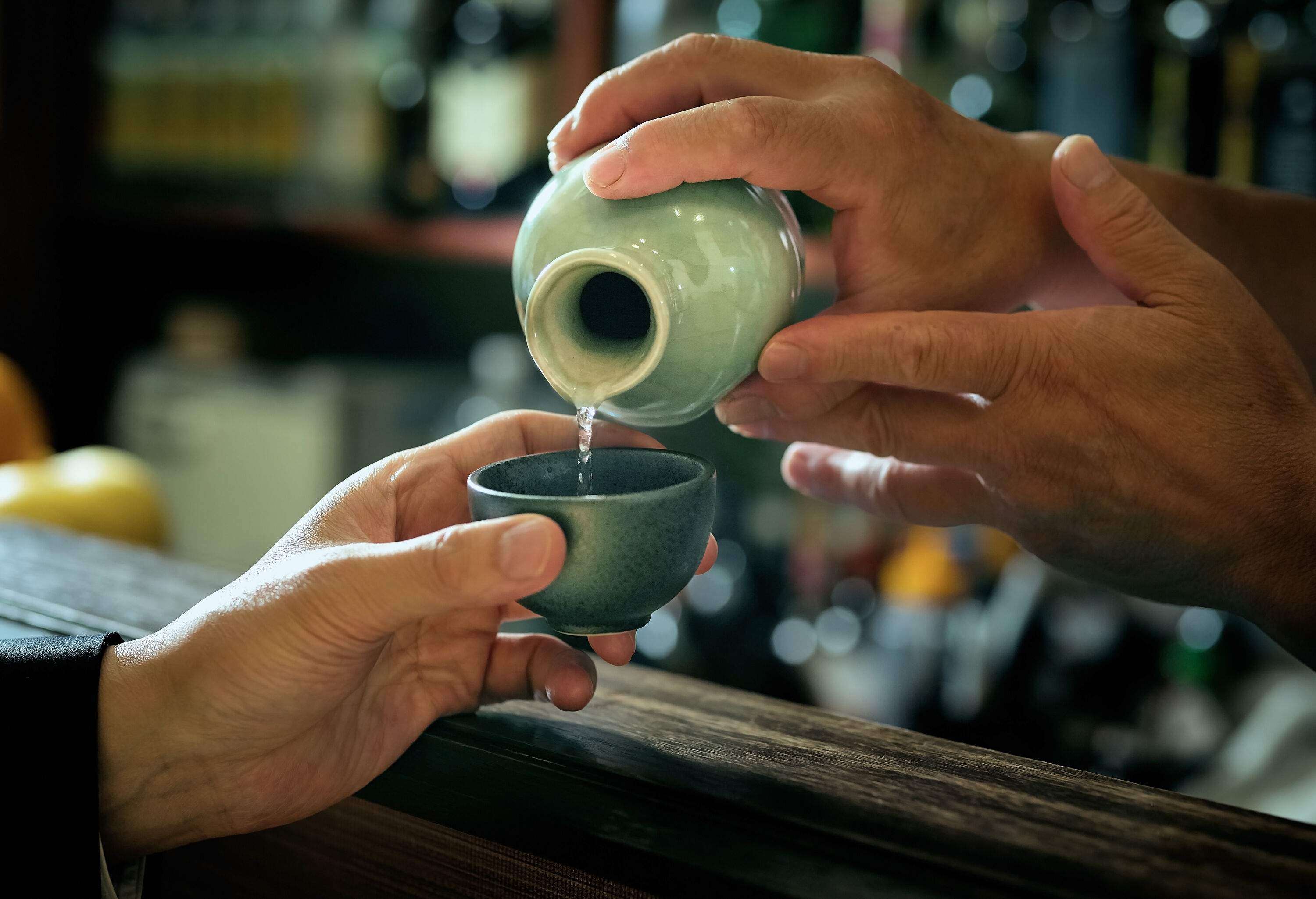
If you want to try some of Japan’s best sake there is no better place than Nada in Kobe. You can visit different breweries in the area. Some have exhibits about the art of sake brewing and many offer tastings.
Kobe Earthquake Memorial Museum
Unfortunately, earthquakes are a part of life in Japan and Kobe was hit especially hard in 1995. The museum not only commemorates the 5,000 people who lost their lives but also educates about earthquakes as well as disaster prevention.
Day 9+10: Hiroshima
Distance from Kobe: 190 mi - 4 hours
Hiroshima is an absolute gem and quickly became my favorite city on my recent Japan trip. Despite its tragic history the city today is full of life and a real stunner especially when the sun is out. Whatever you do, don't forget to eat some local oysters and the Hiroshima-style Okonomiyaki.
Hotel in Hiroshima: Kiro, a sleek design hotel that has some traditional Japanese rooms
Peace Memorial Museum & Park
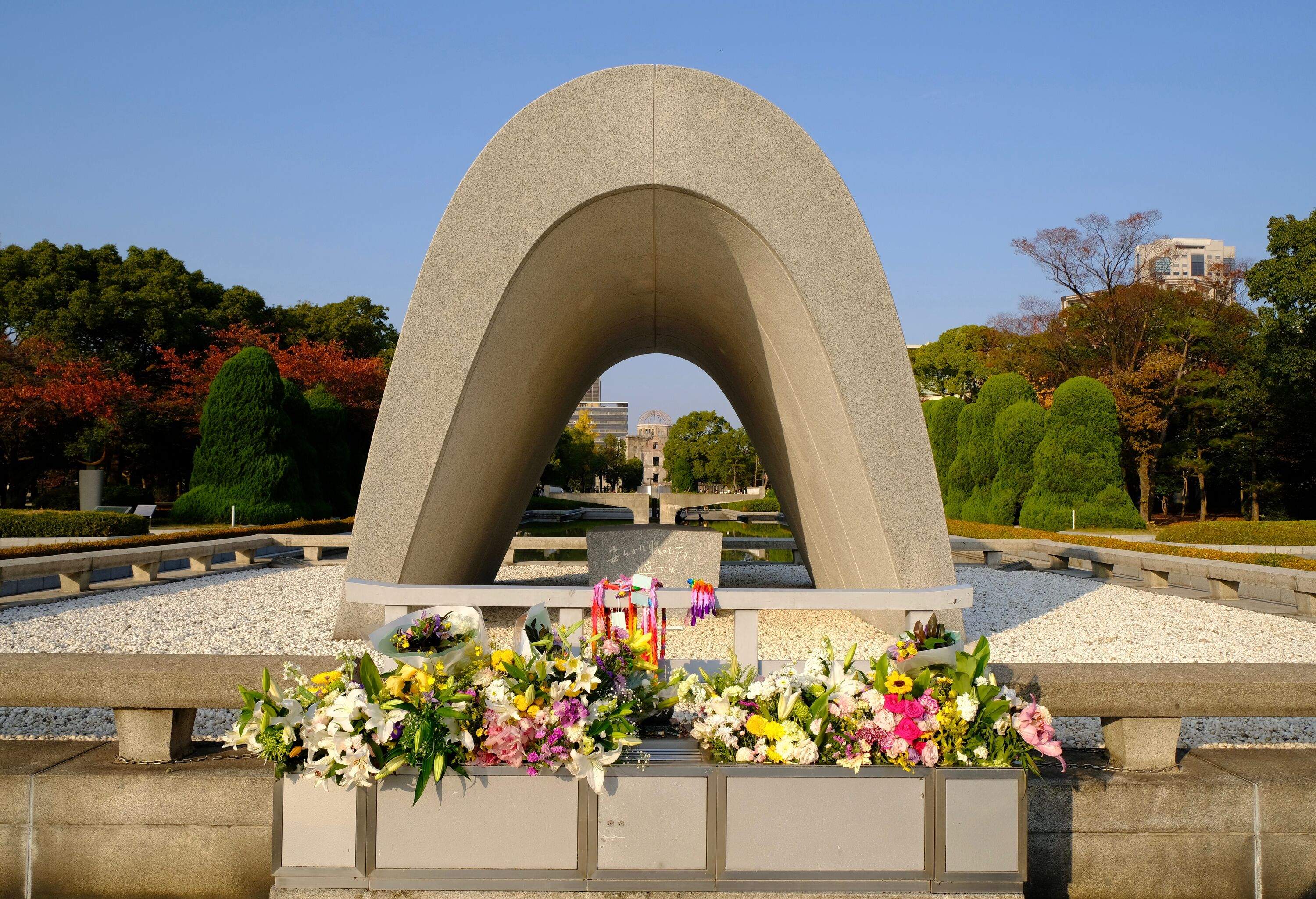
No visit to Hiroshima would be complete without learning more about the first atomic bomb that was dropped here on August 6, 1945. The museum pays tribute to the victims and survivors. Stroll through the park afterward which has some beautiful memorial sites and visit the A-Bomb Dome, a stark reminder of the event.
Miyajima Island
Hop on a train and catch a short ferry to visit Miyajima Island. The island is home to more holy deer and the Itsukushima Shrine that appears to be floating during high tide. I recommend you come early in the morning as the island gets very busy with day trippers. Do get a matcha ice cream decorated with a deer cookie while you stroll along the beach.
From Hiroshima, it is best if you book a flight out from Osaka Kansai airport. Alternatively you can drop off your car at Hiroshima airport and book a domestic flight to Tokyo and leave from there.
Create your own 14 days Japan itinerary
If the above is not enough for you, you can combine both routes into an epic Japan 2 week itinerary. Alternatively, you can add one of the most beautiful places in Japan or stay longer to see a haunted building in Tokyo.
Flight and hotel rates are averages based on data collected by KAYAK. These prices offer an estimate for organizing your trip, but they may vary according to offers, period, destination or your preferences. The price per liter of gasoline, as of April 1st, 2024, is subject to fluctuations, and comes from numbeo.com.
The hotel recommendations included in this article are based on customer ratings and the author's personal choices, so please feel free to use our hotel search tool to find the accommodation best suited to your needs.

